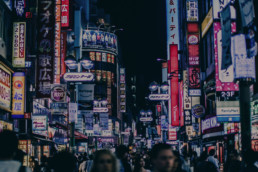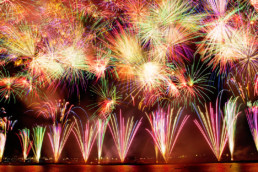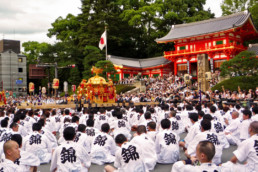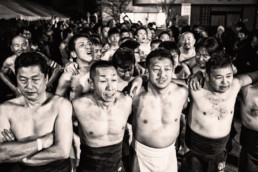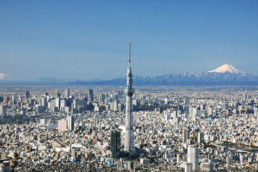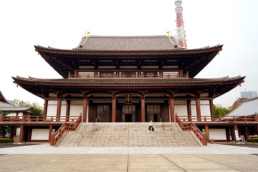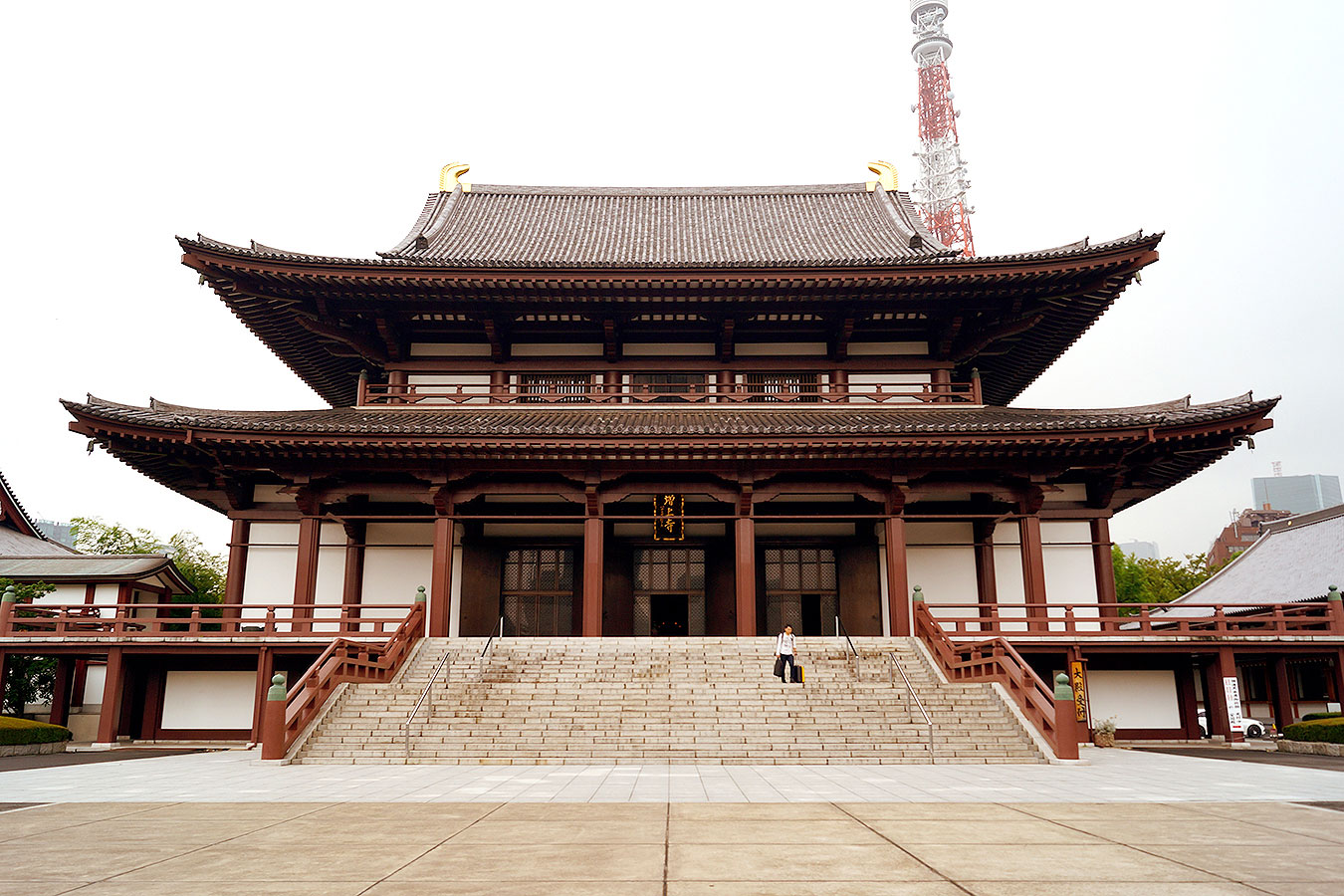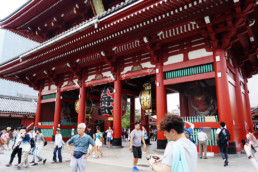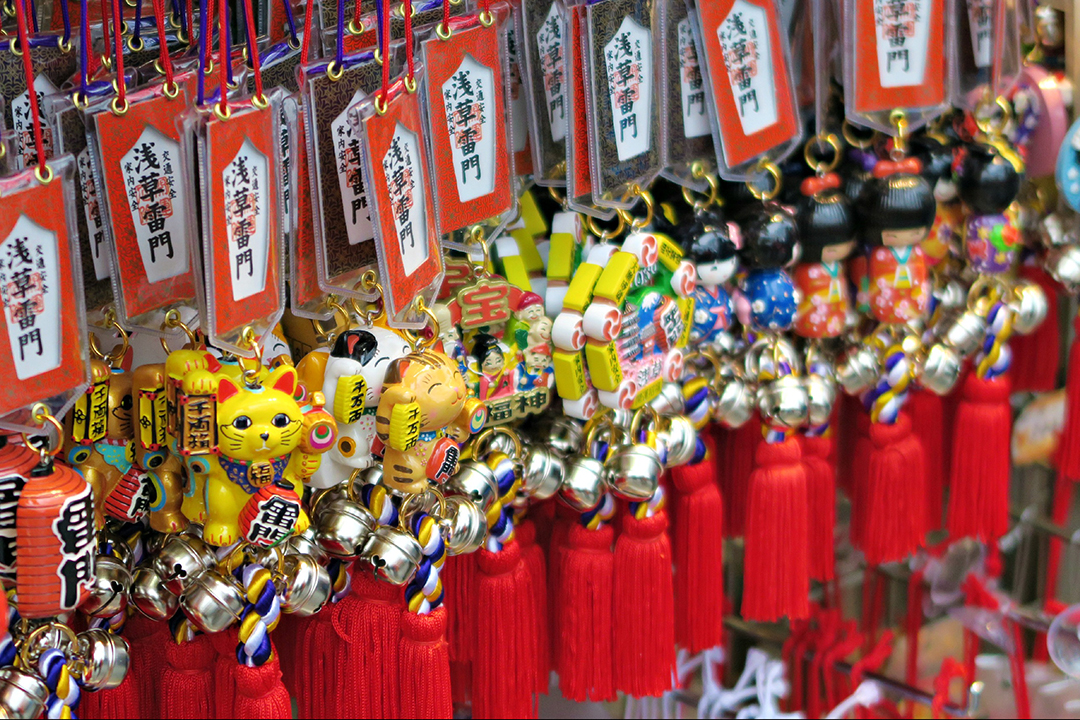Japan Travel: Shibuya
The Dynamic Shibuya
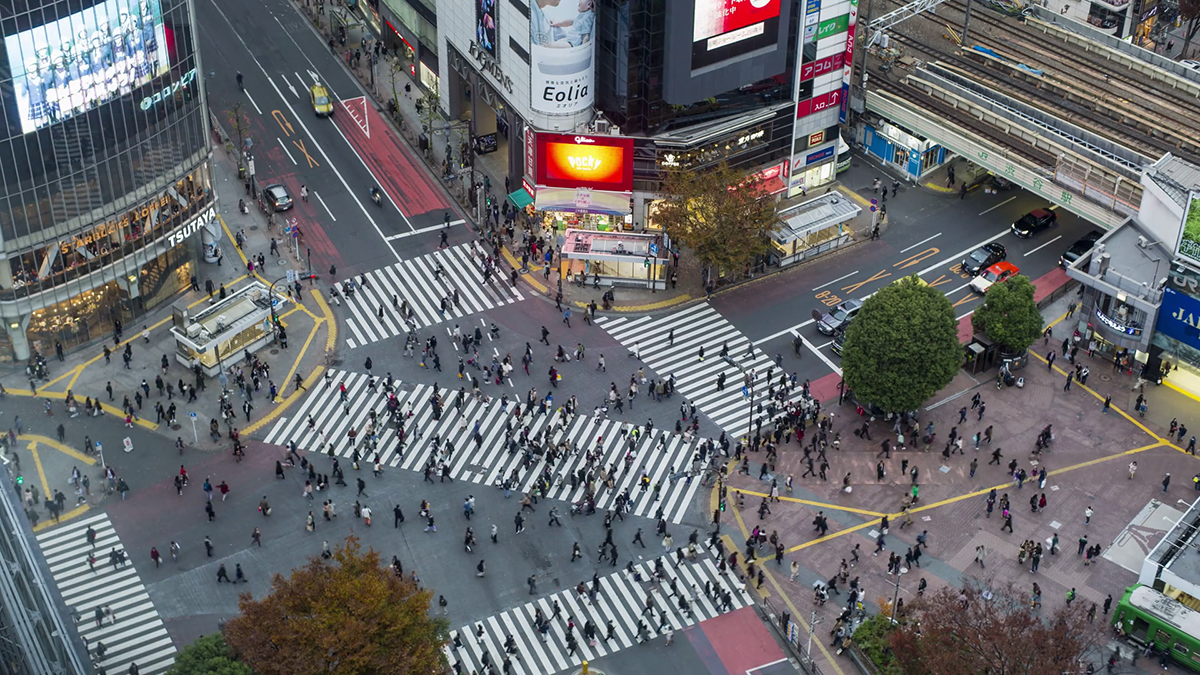
Photo credit: Google
Shibuya (渋谷区 Shibuya-ku), known as the most dynamic area of the city, is one of the 23 special wards of Tokyo. It develops around the area of the Shibuya Station, one of the busiest stations of the capital, that opens to the Shibuya Scramble Crossing, the most crowded street-crossing in the world.
All the buildings are covered by big screens that illuminate the whole ward as the sun sets. Streets are full of stores like the 109 (Ichi-maru-kyū), the iconic department store, and in particular music stores, restaurants and the famous “love hotels”. These can be found mainly in the so called Shibuya’s Love Hotel Hill. To make it all the more distinctive there are the young people leading the art of cosplay and….. well, Shibuya in one of the wards in which the Yakuza is more active!
If you don’t know what the Yakuza is, well the mystery is soon solved. It is the famous Japanese criminal organization divided in many different groups called ‘kumi’ or ‘bōryokudan’ (literally ‘violent group’) according to the legal terminology. It has its roots back to the Edo Period.
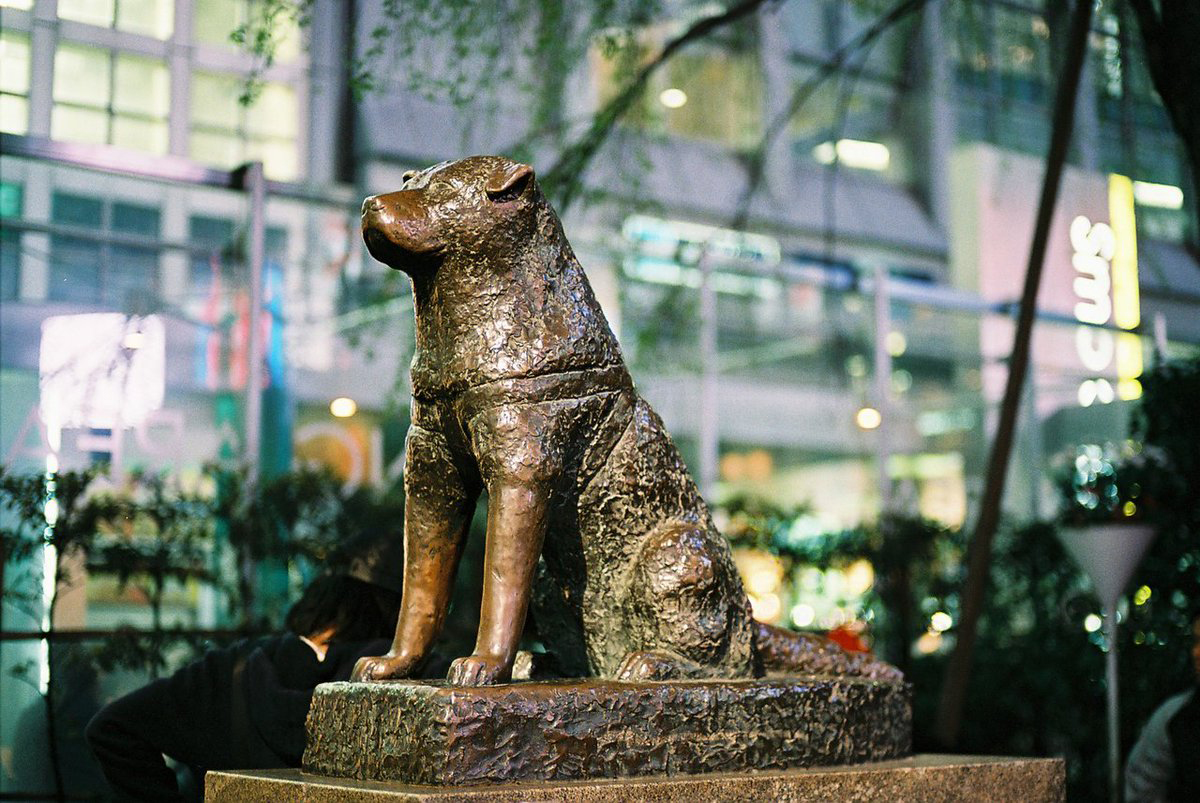
Photo credit: fotopedia.com
Yet, one of the main symbol of Shibuya is the monument dedicated to Hachiko, the dog that became famous for his loyalty to his owner, Hidesaburō Ueno. Unfortunately, the statue is just a reproduction of that original one that was lost in the Second World War.
One ward, many curiosities
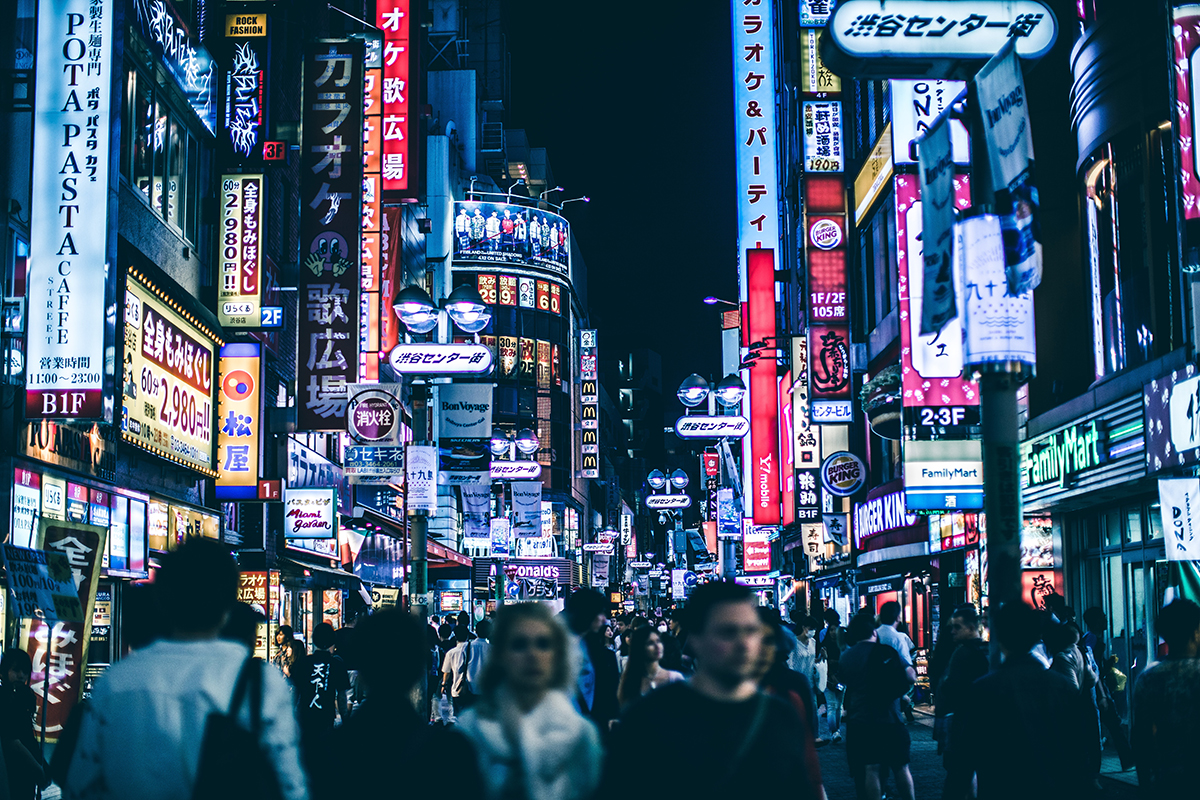
Photocredit: AndreBenz
Surely the name “Shibuya” is known to everyone. Those who love animes must have noticed that, for example, in Super Gals! there are many references to it. Not to mention that the protagonist has the habit of sitting on the statue of Hachikō to free her mind from all her thoughts! In the Digimon series the train for the “Digiworld” departs right from the Shibuya station. But its not only in animes that these kind of references can be found. In the Nintendo DS video game The World Ends with You, you have the chance to walk Shibuya’s streets faithfully reproduced in all their symbol places.
Last but not least, its right here that the musical genre of the Shibuya-kei was born as a fusion between electronic and pop music, and part of the J-pop genre.
Harajuku District
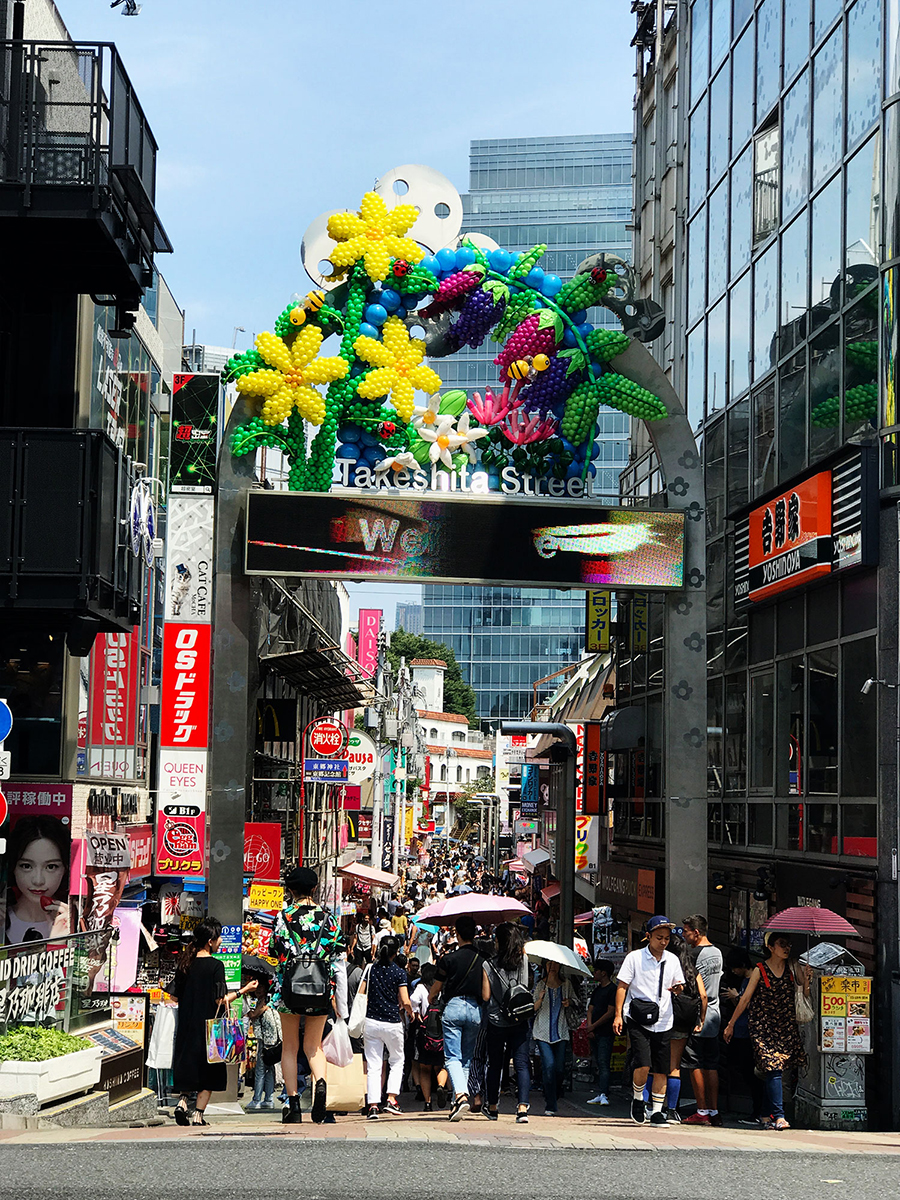
Photo credit: JAPAN ITALY BRIDGE
Harajuku (原宿 "meadow lodging" literally) is best known as the center of the Japanese extremely innovative youth trends. Two are the main shopping streets of the area, Takeshita and Omotesandō. The first one is dedicated to youth trends and is full of stores with many lolita, visual kei, rockabilly, punk and cyberpunk style items. Omotesandō, on the other hand, “Tokyo’s Champs-Élysées”, is dedicated to stores like Louis Vuitton, Chanel, Prada and Tod’s, just to name a few. The young girls that crowd Harajuku’s streets are identified as Harajuku girls. They are teens dressed according to many different styles, often very different from each other, but all with a distinguished eccentricity and very colorful. They are expressions of various subcultures, lolita, ganguro and kogal among the others
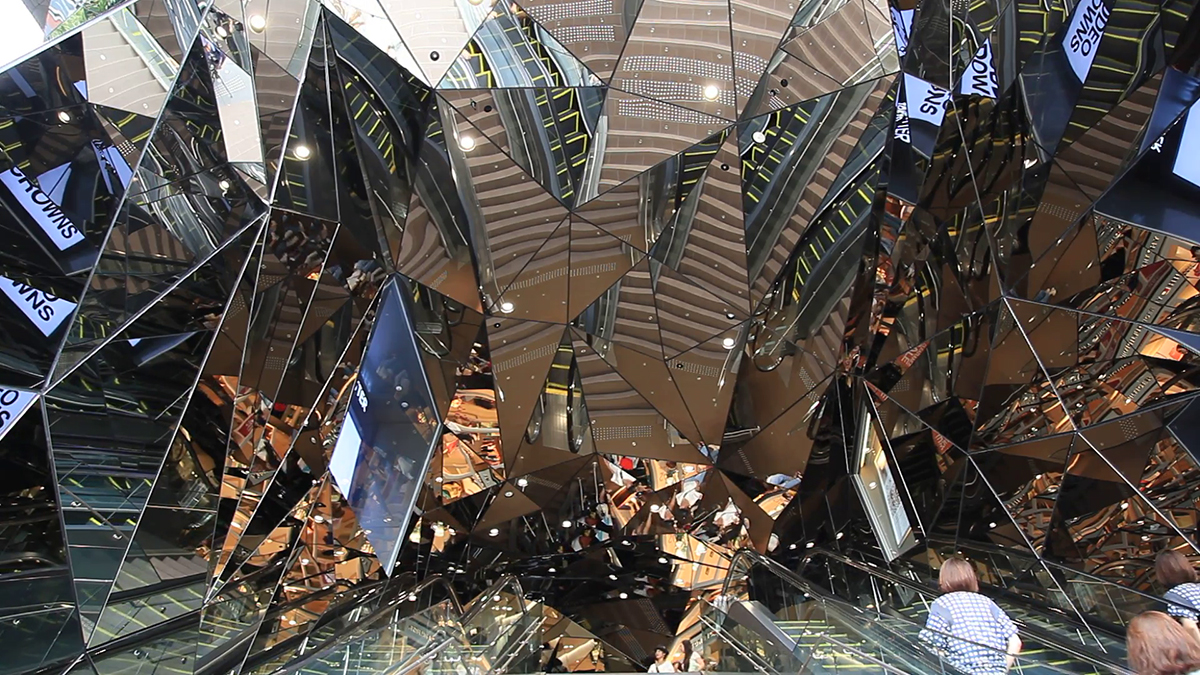
Photo credit: Google
Visual Kei was born here
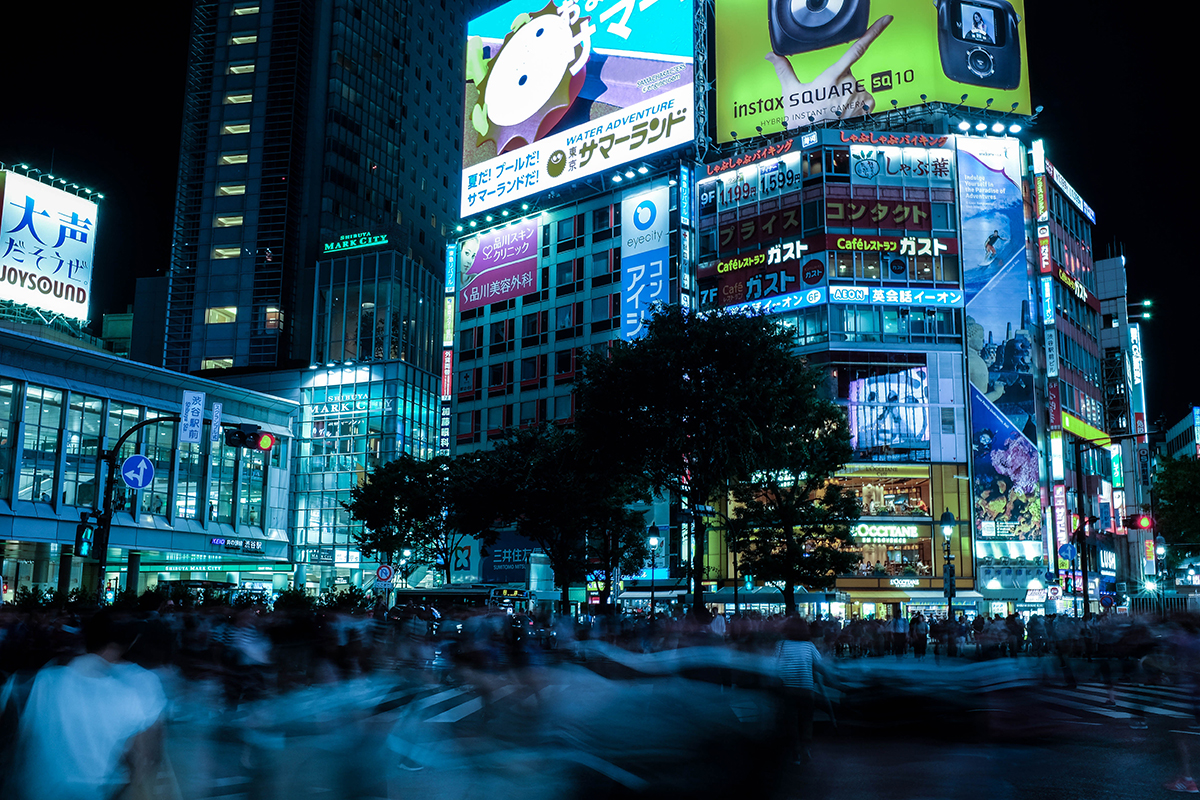
Photo credit: Alex Knigh
The musical genre of Visual Kei – from the English word visual and the Japanese word kei (系, “style”) – that was born around the end of the 80s, developed around this ward. The core of this genre is its aesthetic dimension. In fact, its various music bands distinguish themselves with the great theatricality and attention for the visual and scenographic aspect. One of the most distinctive elements is the exclusive presence of male musicians. This has its roots in the traditional Noh Theater where men play female roles as well.
Curiously, many think that the word “Visual Kei” derives from “Psychedelic violence crime of visual shock”, one of X Japan slogans, a band pioneer of the genre.
Harajuku is the perfect place to immerse yourself in this subculture, in particular on the Jingu Bashi (the sanctuary bridge), a pedestrian bridge that connects Harajuku’s center to the Meiji Shrine.

Photo credit: @camknows

Photo credit: tokyofashion.com
Japan Italy Bridge Tips: Edogawa Fireworks
Edogawa Fireworks

photo credit: ajpscs
If you are in Tokyo this summer we suggest this wonderful event that for 42 years has been entertaining people of Edogawa (Special ward of Tokyo that takes it’s name from Edo River).
The Edogawa Fireworks Festival takes place every first Saturday of August, where for 75 minutes you won’t be able to take your eyes from the sky. A show with more than 14,000 fireworks shot up into Tokyo’s sky.
We suggest you watch the show Shinozaki Park, about 15 minutes on foot from Shinozaki Station. Obviously it is a free event but hurry up if you want to catch the perfect spot! Right in time to be amazed by the spectacular opening with about 1000 golden and silver fireworks shot up into the sky only during the first incredible minutes.
If you are not sure to catch a spot then you can reserve one buying your thicket on this site (Japanese only).
Whether you go alone, or with your lover, whether you are with your friends or your family… Don’t miss this unique event!!
DATE: 5th Aug, 2017
STARTING/FINISHING TIME: 07:15pm – 08:30pm
LOCATION: Edogawa Fireworks Festival Location
ENTRY: Free / Reservable seats here (Japanese only)
CLOSER STATION: Shinozaki
WHERE: Ichikawa, Tokyo
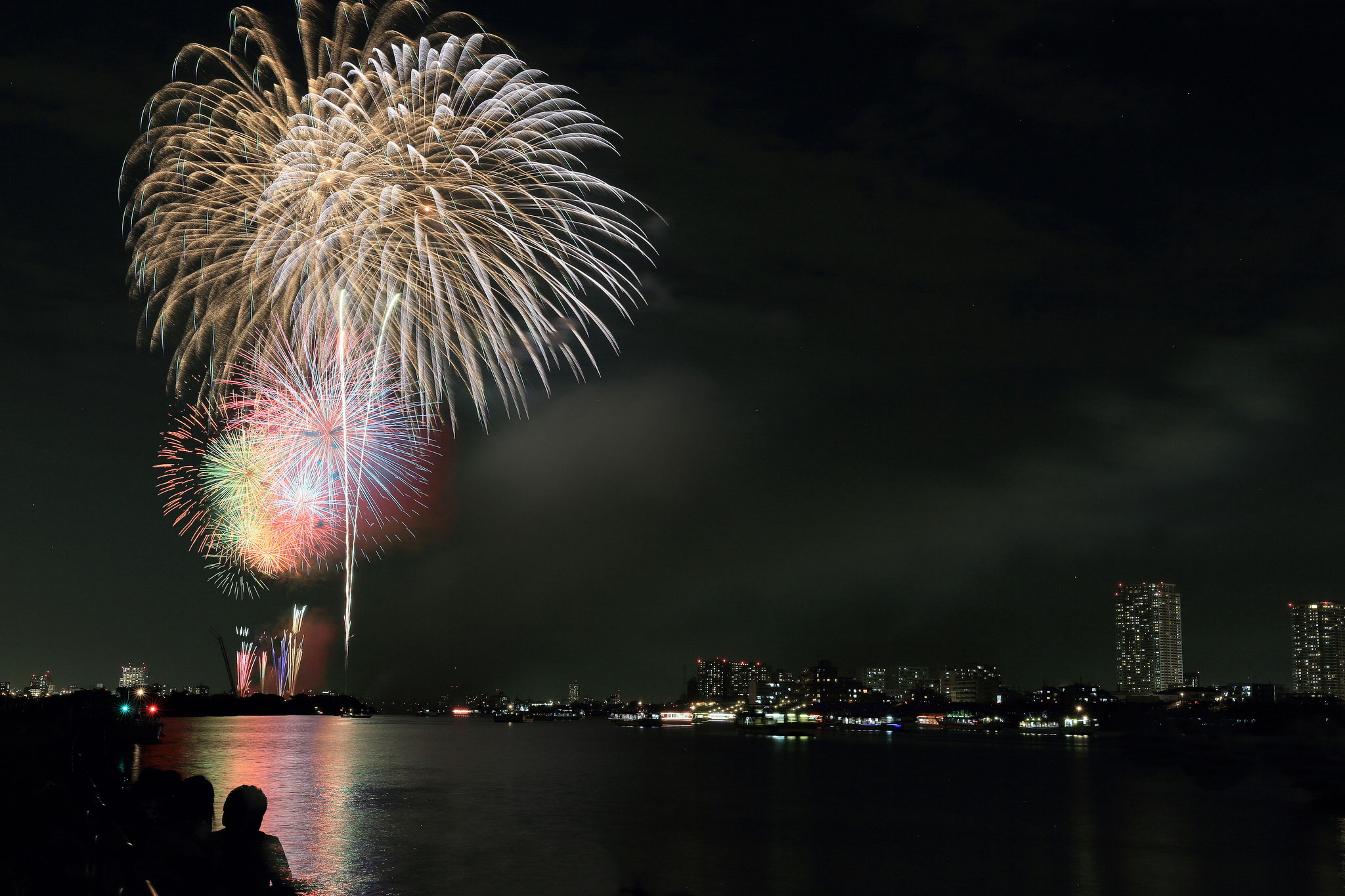
photo credit: cate♪
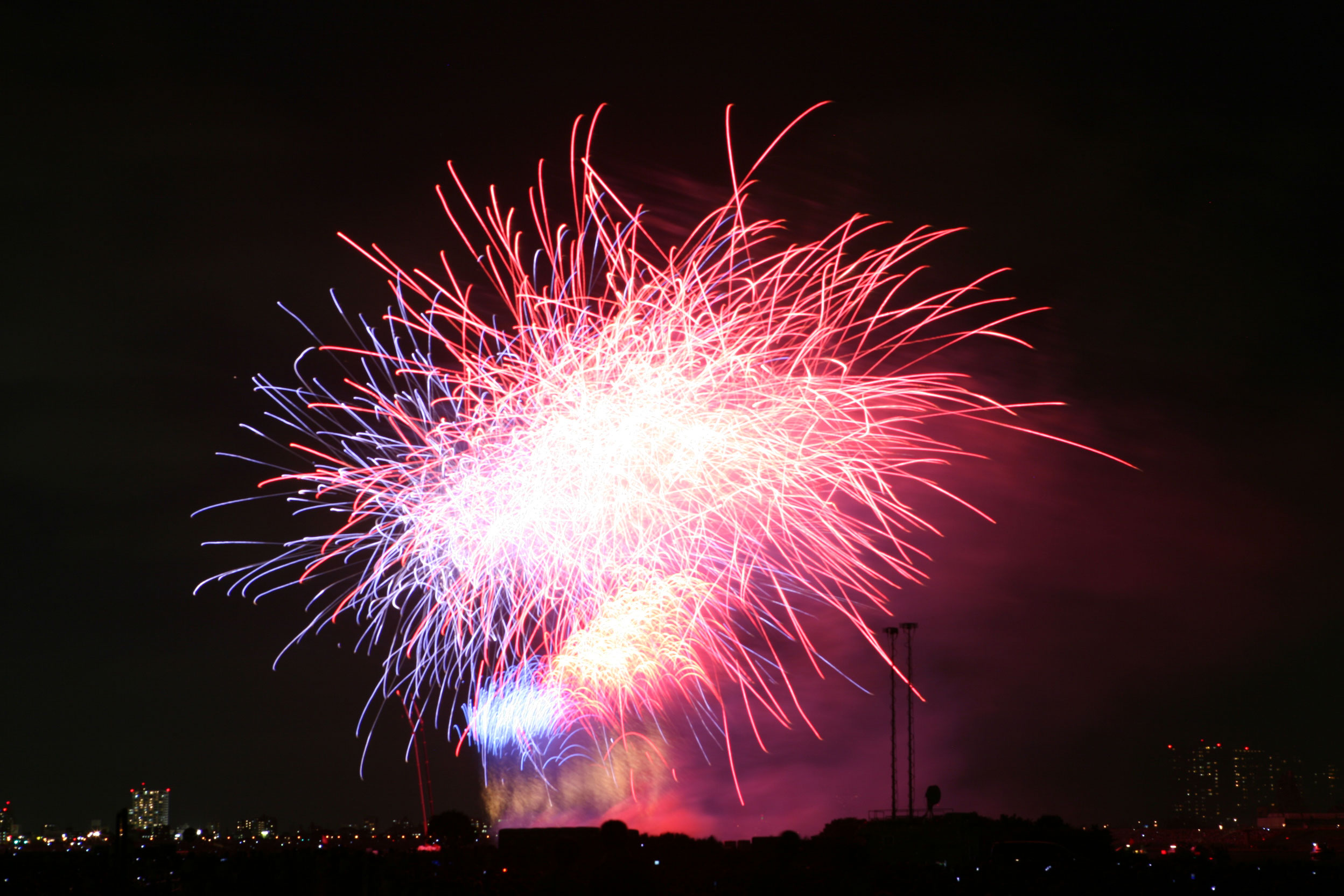
photo credit: Luke Kaneko
Japanese Tradition: Gion Matsuri
Gion Matsuri: an unique experience
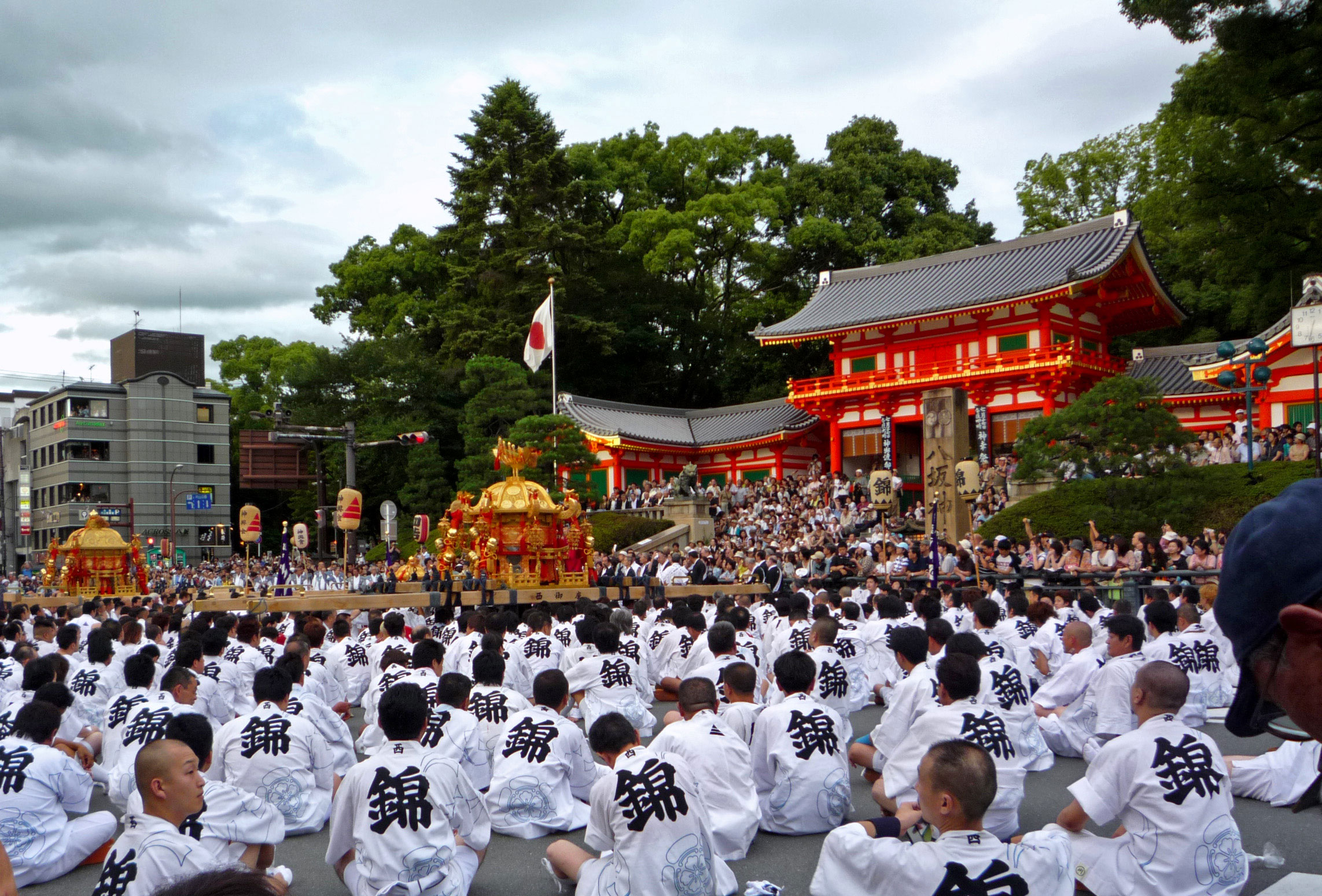
photo credit: Daranice
The Gion Festival or Gion Matsuri (祗園祭), this is how it has been called since the Meiji era, takes its name from the famous Kyōto area, Gion, Higashiyama district. It’s a religious celebration dedicated to the Susanoo God, also known as Takehaya Susanoo-no-Mikoto, worshiped in the Yasaka shrine.
Susanoo, God of the sea and storms, it’s also the God of the dead, as well as Amaterasu’s brother, from whom the Japanese Emperor’s family line is believe do descend.
Together with the Aoi Matsuri (May 15th) and the Jidai Matsuri (October 22nd), the Gion Matsuri is one of the three biggest religious festivals in Kyōto, and Japan as well. It is held every summer for the whole month of July. It is meant to calm the spirits of the dead and ask for protection over the city to the God so that he can keep illnesses and natural disasters away.
As you can imagine it’s a matsuri full of events. The most important and attractive are the Yamaboko Junkō ( 山鉾巡行, float’s parade) and the Mikoshi Togyo (神輿渡御, parade of the devine palanquins). Both this events are held between July 17th and 24th, when the festival reaches its climax.
One of the main reasons for the spectacularity of this festival is surely the size of the floats, especially the ones called Hoko. They can even be 25 meters high with a weight of over 10 tons that can move thanks to wheels about 2 meters of diameter. Every float is rebuilt every year from scratch, and then destroyed at the end of every festival. All the pieces are held together without the use of screws, as tradition wants.
But let’s move ahead with order...
A little bit of history

photo credit: kyotodeasobo.com
Tradition says that Gion Matsuri was born in 869. Since a century or so, the Imperial court had moved from Nara to Heiya-kyō (today’s Kyōto) and it was dominated by the Fujiwara family.
It is said that during a plague, the Imperial court decided to hold the first goryōe (御霊会), a purification ritual in the small Shinsen'en shrine. You need to know that at the time the city was situated in a very swampy area, very hot and humid. High concentration of people together with the absence of a proper drainage system made it easy for waste waters to contaminate clean waters. It’s not difficult to imagine that illnesses like malaria, smallpox, flu and dysentery became widely present. However, in ancient Japan the cause of all this was said to be something else entirely.
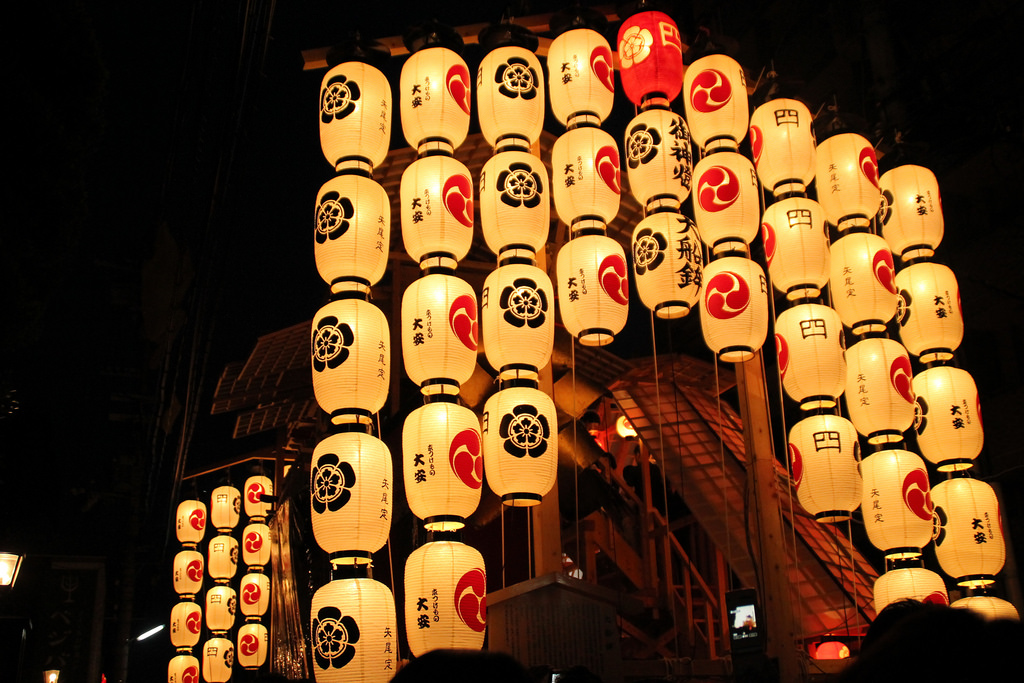
photo credit: japancheapo.com
According to the prediction of a master priest, the real cause of the plagues were devious spirits, identified in the ghosts of prince Sawara Shinnō and his companions. They, accused of the murder of the noble Fujiwara no Tanetsugu, died professing their innocence till the last moments.
The first goryōe was held while trying to calm the spirit by invoking the Susanoo God. Furthermore, the noble Urabe Hiramaru raised 66 spears, one for each Japanese region, so to enclose the evil spirits inside and purify the capital.
It was here that the custom of bringing three mikoshis, or divine palanquins, into procession was born, and it was also decided that a goryōe had to be head every time that a plague or illness was spreading.
Everything was accompanied by other celebrations and joyful moments.
Until 970, when it was decided that the Gion Goryōe (祗園御霊会) had to be held every year.
Afterward, starting from the Muromachi period, the event was enriched with the typical floats, the yamaboko (山鉾), also parading along the streets of the city. These were built thanks to the collaboration of the merchant class that in this very period lives a moment of success after centuries of denigration. Floats were adorned with decorations that became richer and more sophisticated year after year.
In other words, the parade also became a way to show off the richness of the merchant class.
In spite of some small interruptions (during the Ōnin war (1467-1477) and during World War II (1941-1945) ), the festival still lives today and can be proud of more than a thousand years of history.
Celebrations
Celebrations that,as we said, go on for the whole month of July, involve all the different areas of the city.
It kicks off on July 1st, where a ceremony called Kippuiri (吉符入) is held at the Yasaka shrine, Here, representatives of all the districts of the city in charge of the organization of the festival pray so that the it can proceed smoothly and with no incidents.
On July 2nd, at the Town Hall of Kyōto, takes place a lottery headed by the mayor of the city, through which the order of the floats for the parade is decided. Still, opening the procession is always duty of the Naginataboko (長刀鉾).

photo credit: heterophyllum
On July 10th, starts the preparation of the mikoshi (神輿), three palanquins that will house three small shrines dedicated to Susanoo. At the same time, a few buckets are immersed from the Shijō bridge into the sacred waters of Kamo river to draw the water that will be used to wash the mikoshi. In the late afternoon there’s also a parade with the exhibition of paper lanterns of traditional manufacturing that will be used to receive the God.
Also on the 10th, starts the building of the floats and walking along central streets of Kyōto you’ll be able to see theme slowly taking shape by the hands of their wise builders.
The days between the 14th and the 16th are those immediately preceding the main celebration. July 14th is known as yoi-yoi-yoi-yama (宵々々山), the 15th as yoi-yoi-yama (宵々山) while the 16th is called yoi-yama (宵山). The same goes for July the 21st,22nd e 23rd. During this days, starting from 6:00 p.m, the streets closed to traffic overflow with visitors and tourists voices. Here you can walk around vending stands, under the light of the paper lanterns always kept alive, admiring the yamabokos.
And it is also in this days that ancient families of the town open up their window so that people passing by can admire ancient treasures guarded for generations.
On July 15th, the imitaketate (斎竹建) and the yoimiya-sai (宵宮祭) are held. The first one is a ritual during which bamboo truncks are put together in square shape to delimit the area of the procession and protect it from contamination. On the other hand the yoimiya-sai is held at Yasaka shrine, and durig this ritual the spirit of the god is transferred into the 3 portable mikoshi that have already been purified.
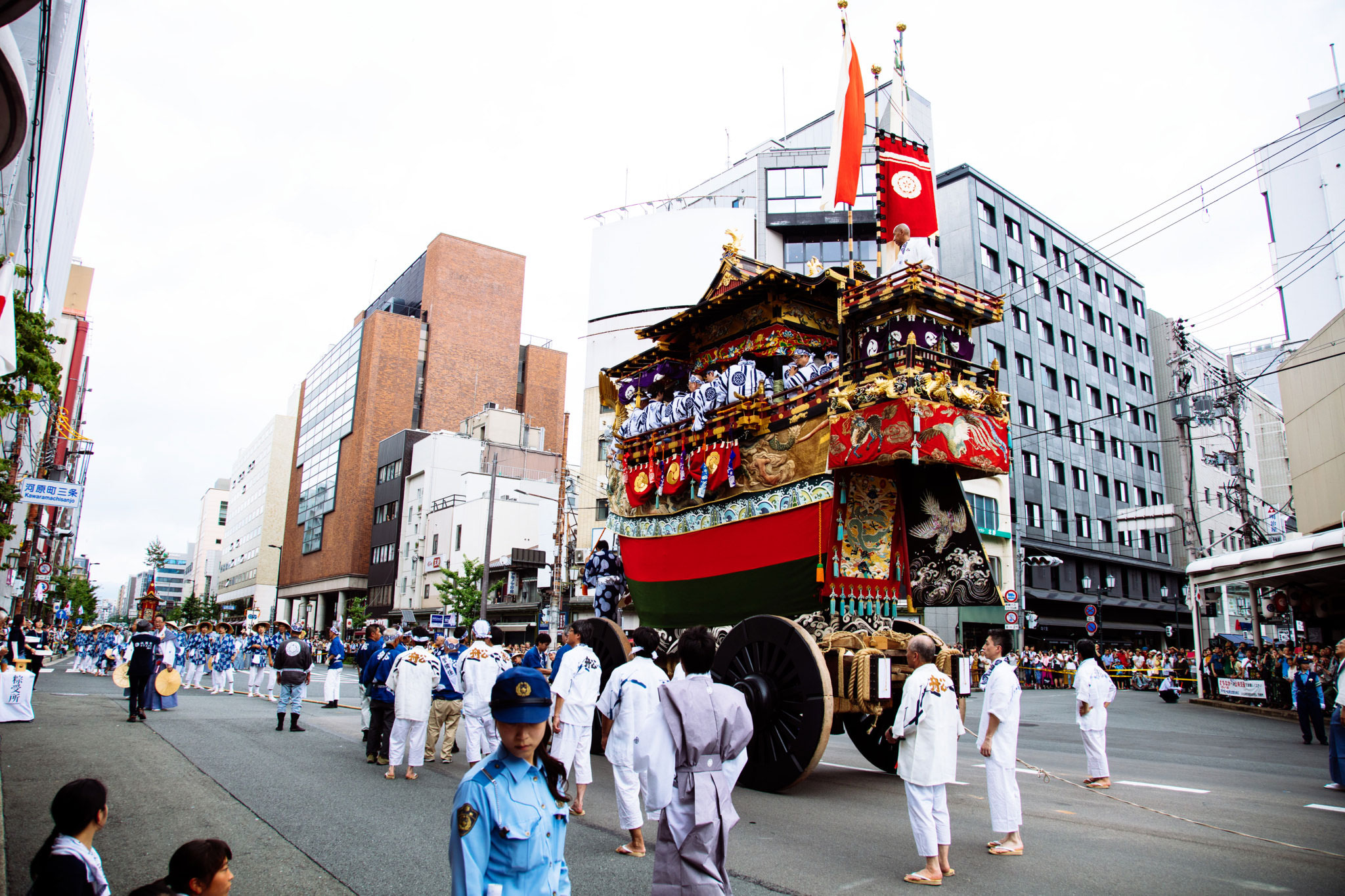
photo credit: Tomomi Onishi
In July 16th the musicians from all the floats go to the temple to pry for good weather the following day, and all is accompanied with music and dancing events along the way.
July 17th is the long awaited day in which the festival reaches its climax. It is the moment of the Yamaboko Junkō, the great floats parade. Floats are divided into 2 groups, yama 山 (mountain) and hoko 鉾 (spear). The opening group it that of the 9 hoko floats, and they symbolize the 66 spears used by Urabe Hiramaru to drive away the evil spirits. The second group is that of the 23 yama floats, smaller than the hokos, that carry life-size representations of important and famous personalities.
Every hoko carries musicians that accompanying the procession with their music.
Kon-kon chiki-chin, kon-kon chiki-chin… This is the distinctive sound of the Gion Matsuri, a traditional rhythm dating back to the Edo period.
And along the parade a profusion of many different dancers and acrobats make it even more joyful and lively. Obviously each and every one of them is dressed in colorful and rigorously traditional clothes.
Has said before the parade is lead by the Naginata-boko, called after the naginata (typical Japanese spear) that springs up from its top, and that is said to have the power to drive away evil spirits and plagues. The original Heian naginata had been forged in metal, but the one we can admire today is made of bamboo.
It is on the Naginataboko that a chigo (稚児) is carried, a young child dressed up in rich, traditional clothes with a golden phoenix-shaped headgear. This child has the duty to represent the God during the festival.
The chosen one, usually selected from the most powerful and important merchant and commercial families of the town, has to undergo a long preparation period before he is allowed to take on this role. Weeks of purification rites and complete isolation, away from everything that could contaminate him, including women. He is not even allowed to walk on common ground but he is carried by men in charge of this duty.
He will have the duty to cut with a single blow a big sacred thatch rope. This is the Shimenawa-kiri (しめ縄切り), an act through which the divinity enters the human world severing the limit that devised the two worlds, and with this act the great celebration can officially starts.
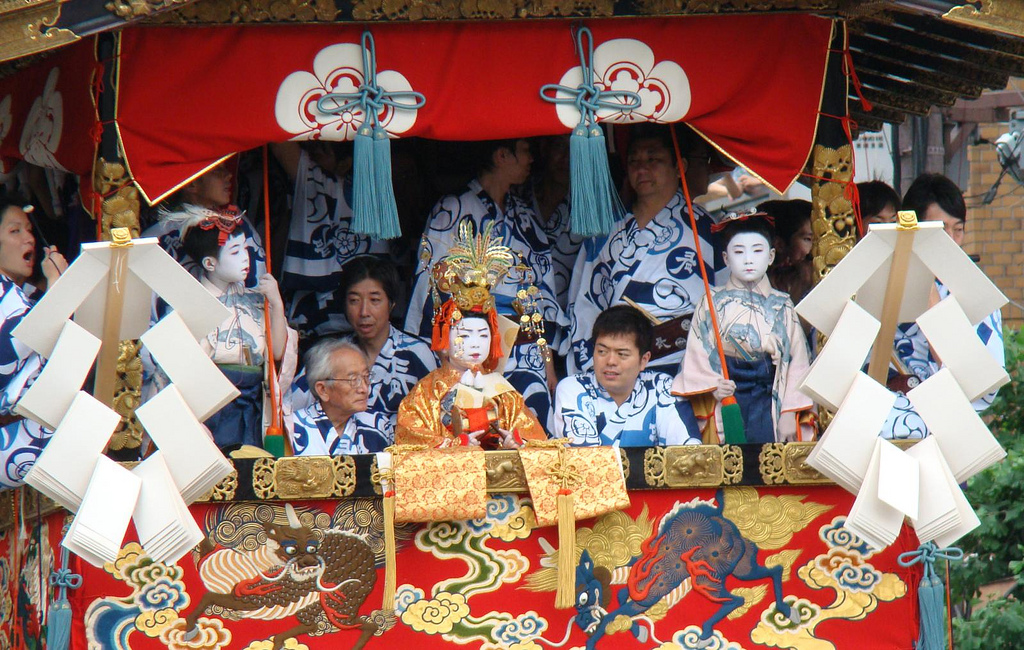
photo credit: picssr.com
In the late afternoon, takes place the mikoshi togyo, where the three mikoshis leave the temple. It is the long awaited Shinkō-sai (神幸祭), or the emerging of the divinity from the temple with its palanquins carried on shoulders around the streets of the city.
On July 24th this double procession is repeated and in the evening the three mikoshis are brought back to their temple. This is the moment of the Kankō-sai (還幸祭), through which the spirit of the God finally returns to the world he belongs to.
At the end of the parade the floats are immediately dismantled and all pieces kept until the next festival.
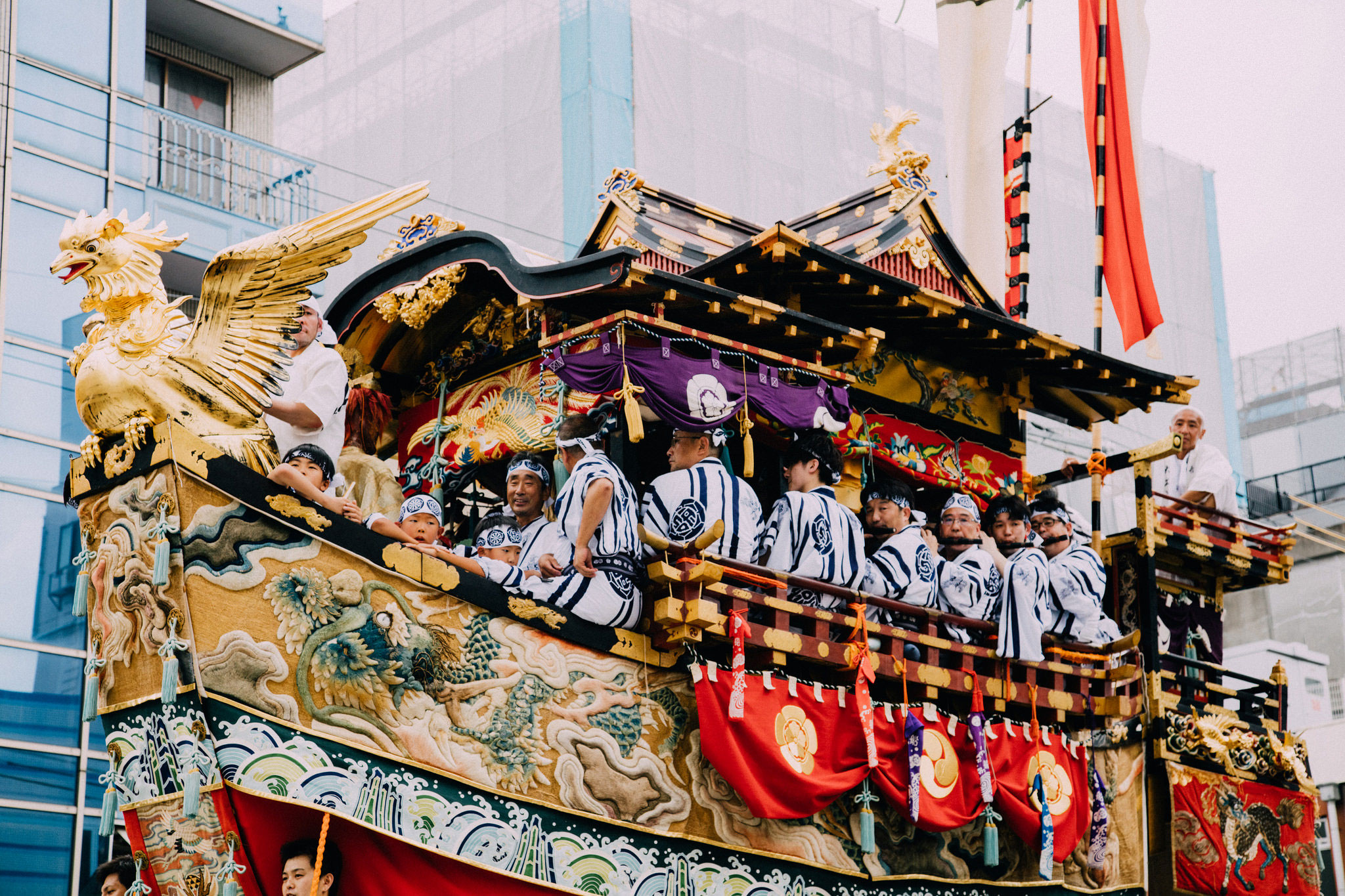
photo credit: Tomomi Onishi
On the same day takes also place the Hanagasa Junkō (花傘巡行), an event that, as suggested from the name, has flowers as its protagonist. In fact, it is written with the kanjis of hana (花) or flower, and kasa (傘) or umbrella. During the parade, the floats and all participants parading along the streets are all decorated with umbrellas and hats embellished with flowers.
The parade is opened by small mikoshis carried by young children, then follows a large parade of people in traditional clothes. There are representatives of social and cultural associations, musicians, dancers, acrobats and in particular some of the most famous geishas and maikos of the town. And they surely are the loveliest flowers displayed the event.
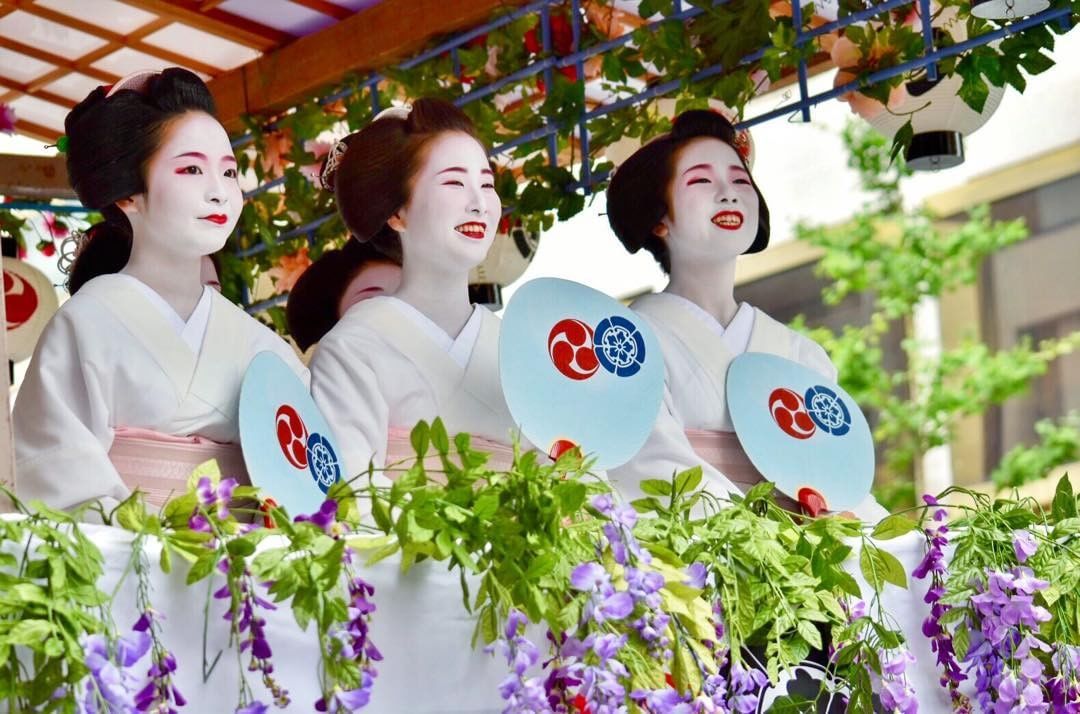
photo credit: geimei.tumblr.com
On July the 28, takes place the ceremony of the mikoshi-arai (神輿洗式),or the ritual of washing the mikoshis at Yasaka shrine, to purify the three palanquins, till next year.
If you are around don’t miss this moments. In fact, it is said that being hit by little splash of the water dedicated to the god brings good luck..
To mark the end of the Gion Matsuri there is the nagoshisai (夏越祭) festival, that is held every July 31st at Ekijin shrine.
Tied to the tori, the entrance gate that marks the beginning of the sacred area of the temple, there is a big thatch rope in the shape of a circle with 2 meters in diameter. It is the Chinowa (茅の輪).
Please do pass through it to be purified, and then you’ll receive a protection charm on with there’s written “Somin-shorai shison nari(蘇民将来子孫也) that means “I’m Somin Shorai’s descendant”. According to the legend, Somin Shorai was a simple man that one day happened to give hospitality to a traveler that had already been refused by a rich man. The traveler then reveals himself as a God and to thank him for his hospitality teaches him how to make lucky charms. Since then it is believed that this charms can push away catastrophe and thieves.
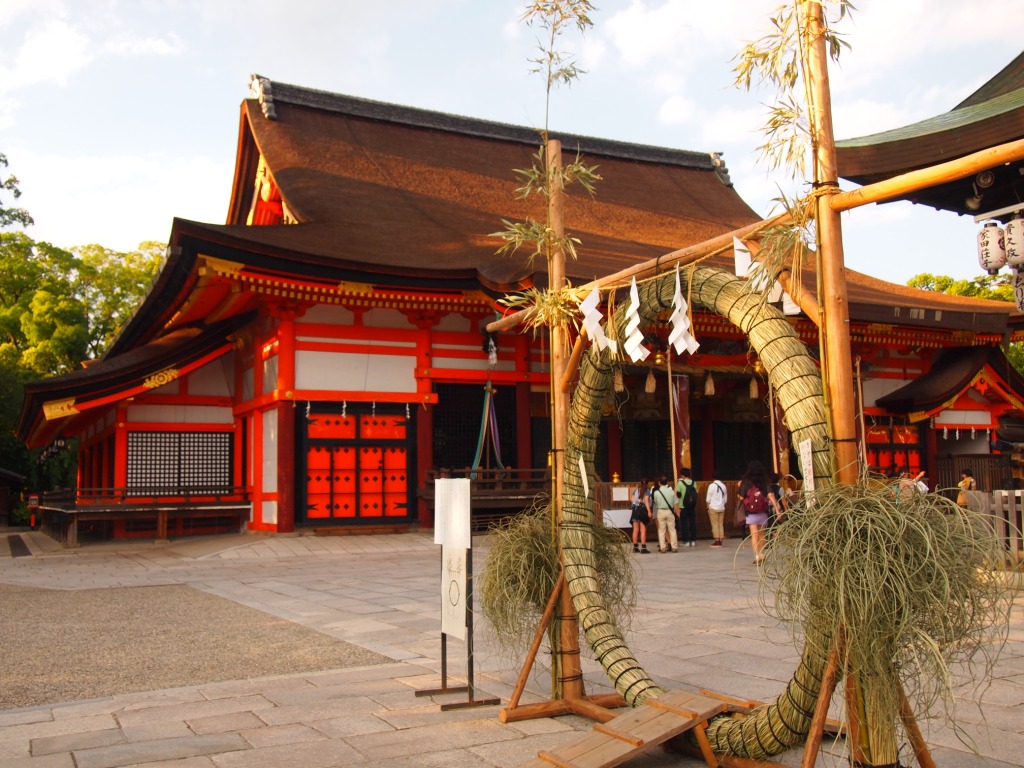
photo credit: kyoto-tabiya.com
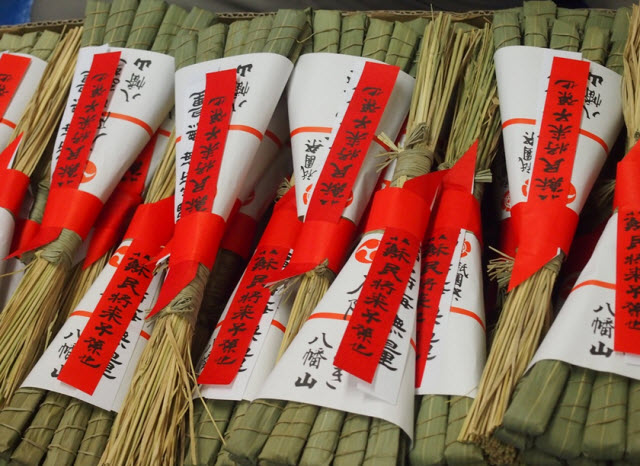
photo credit: kyotoiju.com
That of the Gion Matsuri in a long trip in which History and legend, religion and entertainment are entwined together. It is real a one-of-a-kind event.
And you? Have you ever been able to take part to it? We are waiting for your comments and experiences!
Japan Tradition: Hadaka Matsuri
The Hadaka Matsuri
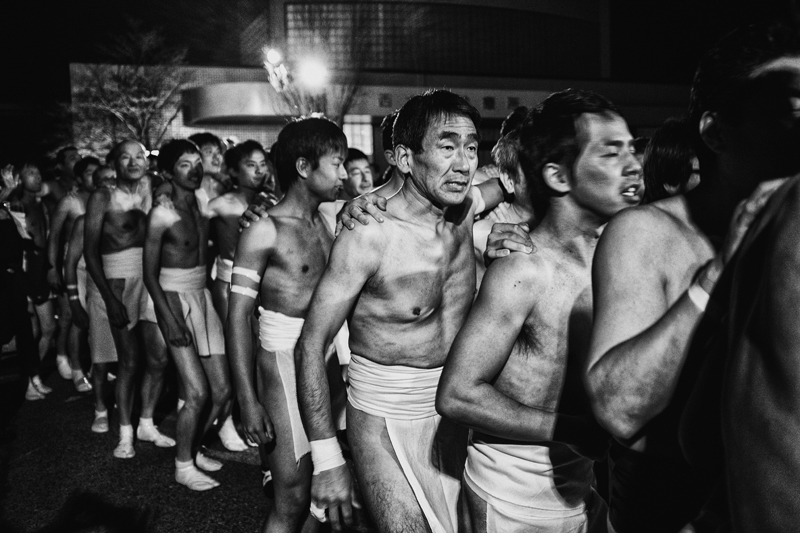
Even though nowadays nudity is not a shame anymore, in this part of the world, and not only here, it still is one of those topics usually considered tingly.
Nudity intrigues us, sometimes it upsets us, and it surely arouses our curiosity.
The Land of the rising sun is a place rich of costumes and traditions often in contrast with each other. Let's consider for example their obsession with good manners or the extreme attention to their privacy. But also their strong sense of decency and the districts dedicated to night pleasures and endless fun.
What better chance to 'bare ourselves', if not during the Hadaka Matsuri.
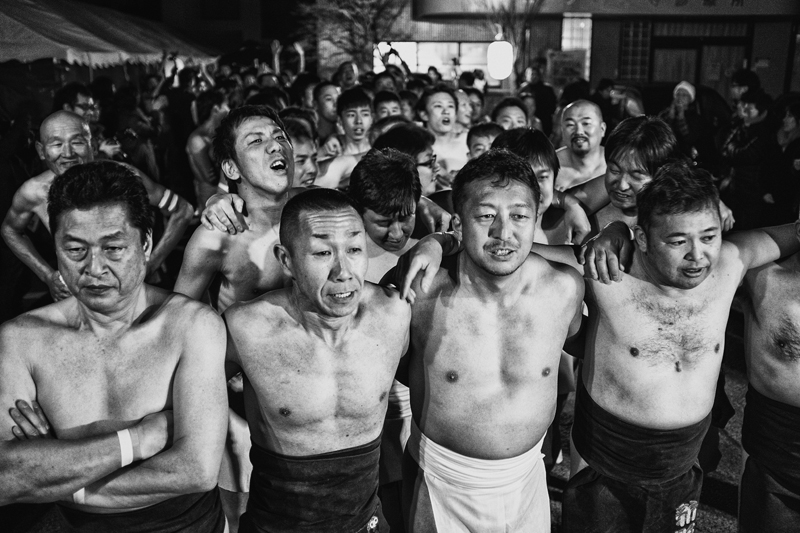
Before we focus on this particular celebration I would like to take a step back. In Japanese language the word matsuri indicates a traditional festival. These festivals usually coincide with an event that attracts thousands of people in streets and parks.
The Origin
A great number of festivals took their origin in Chinese traditional festivals. However these festivity tended to disappear as time passed by, mixing with, or even being replaced by typical Japanese costumes. In fact, in Japan, the idea of festival or celebration derives from the deep bond that this community has with nature. This bond can be traced in the traditional religion of the country, the Shintoism.
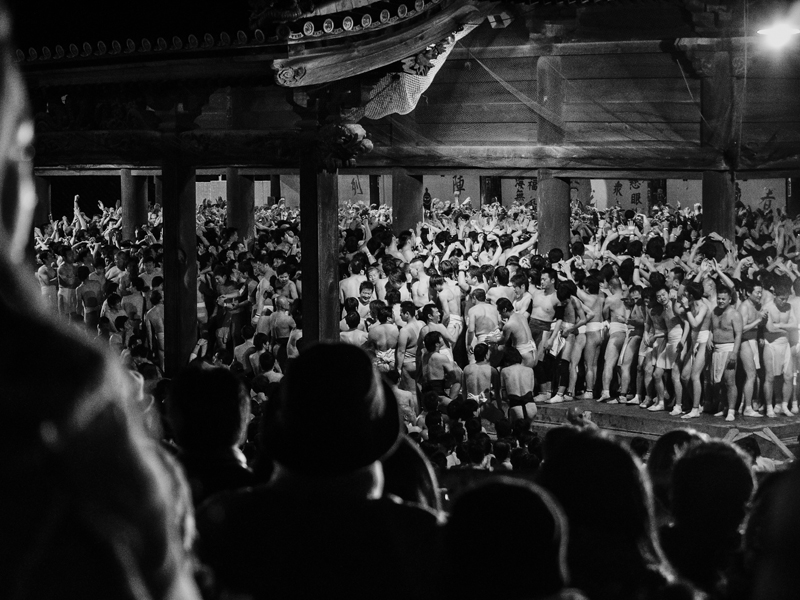
'Hadaka Matsuri' literally means 'Festival of the naked man'. During this celebration the approximately 9.000 participants, all men, wear nothing but the traditional Japanese loincloth, the fundoshi. for those who want to, they can wear a kimono too. But among all participants there are also men that decide to wear nothing at all.
This festival takes place in many different parts of Japan. The most important is the one that takes place in Okayama (city where this festival originated from), on the island of Honshu. It takes place in the Saidai-ji shrine, and in fact the full name of this festival would be "Saidaiji Eyo Hadaka Matsuri". As it a religious celebration it is absolutely forbidden to bring or drink alcohol. Also, men with tattoos can take part in it, but only if they cover them with a band.
The Hadaka Matsuri has ancient origins. It is said that it can traced back in 767 d.C, when worshipers competed to receive protection charms made of paper, the go-o, thrown to them by a priests.
Hadaka Matsuri and Nudity
According to some evidences, it is believed that those who were able to obtain one of these protection charms would be blessed with good fortune for one year.
Moreover, the collective belief saw in nudity something able to absorb evil forces and misfortune. In fact, the ones that caught the charm were also proclaimed 'Naked man' or 'Naked Spirit' (shin-otoko). All those that wished to get rid of their misfortune tried to touch him.
But still today it is not easy to 'touch' the fortunate man because of the many participants in this festival. Even for frequent participants it might take many years before they are able to touch him.
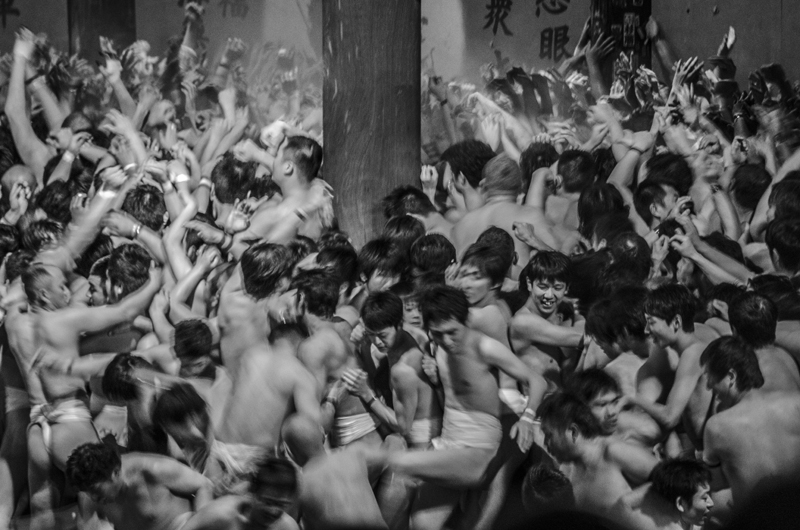
As time passed by, priests realized that the go-o made in paper did not last for long. In fact, they ended up being destroyed right because of the crowd that tried to catch them. Later, they were replaced by wooden sticks still used now and prepared by priests themselves through manual instruments.
And this is how nudity became a sacred tradition.
The Tradition
After a few days of isolation to keep vigil and pray, young participants move toward the shrine wearing only the fundoshi. They run while being hit by ice-cold jet of water. Reached the shrine, they have to catch one of the wooden sticks, the shingi. Priests throw these sticks to the crowd from the upper part of the Shrine. At 22:00, these charms are throw at them with almost all lights off to make it even more challenging. After catching the sticks, the first one that is able to put it in vertical position into a case filled with rice is proclaimed shin-otoko. The winner is blessed with one year of happiness and good fortune, and they will also receive a monetary prize.
Together with the shingi, priests throw 100 willow branches, and all those that are able to catch one will be granted with good fortune for the next year.
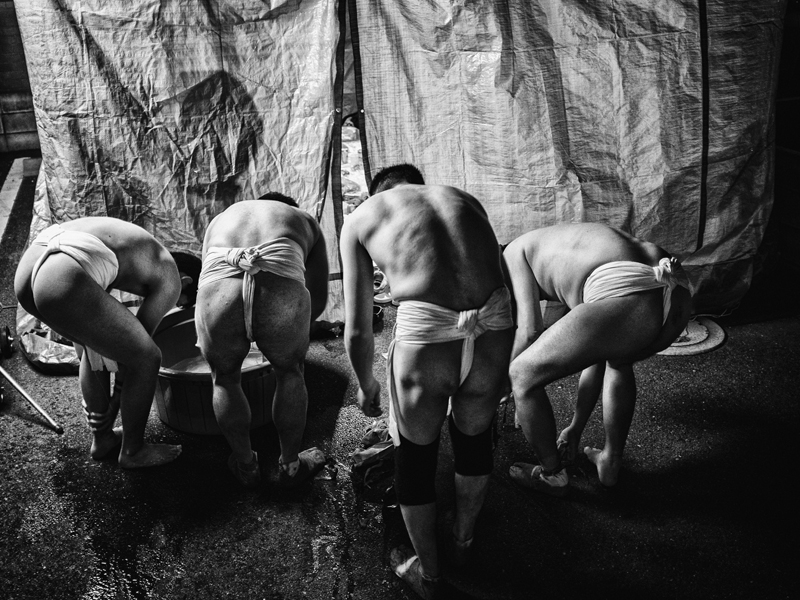
Less fortunate are the incidents that may happen due to the crowd. In the best case scenario they are 'only' bruises, broken noses or lips. For this reason that priests always ask participants to write down on their fundoshi (or on a piece of paper inside it) all useful information like: name, surname, address and blood type.
Fotografo : Kurt Gledhill
Japan Travel: Tokyo Tower & Skytree
Tokyo Tower
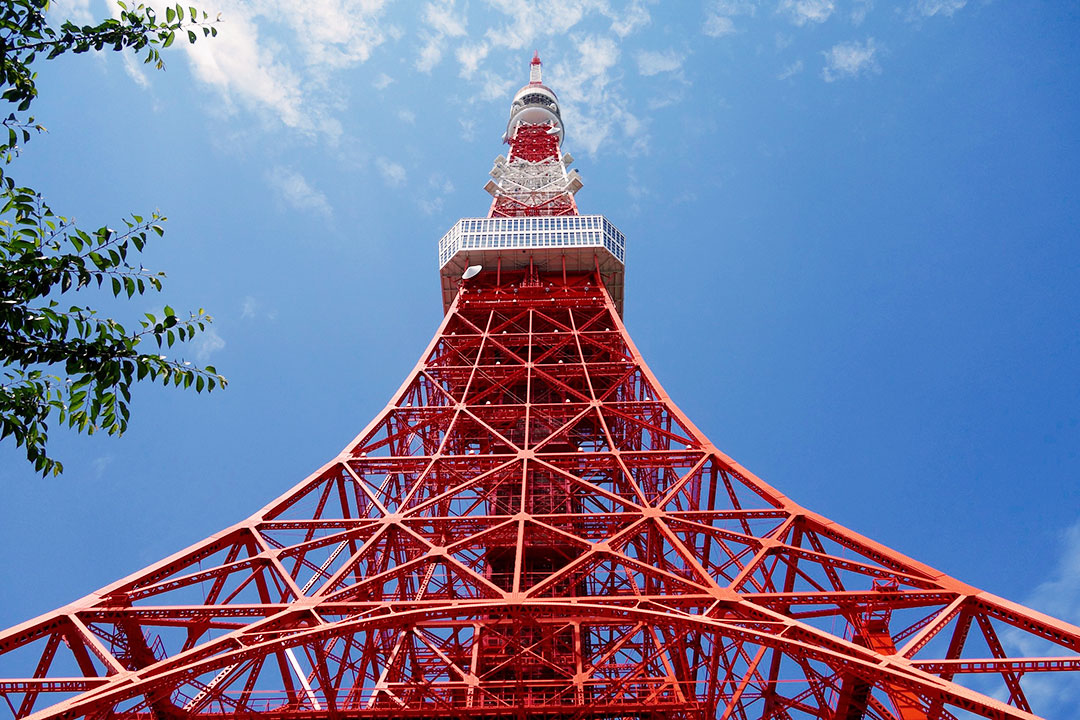
Inspired by the Eiffel Tower, the Tokyo Tower is situated in the Shiba-kōen zone in Minato, Tokyo. Built in 1958 as a symbol of economic rebirth, with its 333 meters it has a double function. It is in fact a tower for telecommunication and scenic landmark!
Completely built in steel there are two observatory that will let you have one of the best views in the world. At the first floor, situated at 150 meters from the ground, there's the main observatory offering you a scenic view on the city. At 250 meters there's another special observatory that will allow you to see the Tokyo Sky Tree and up till mount Fuji.
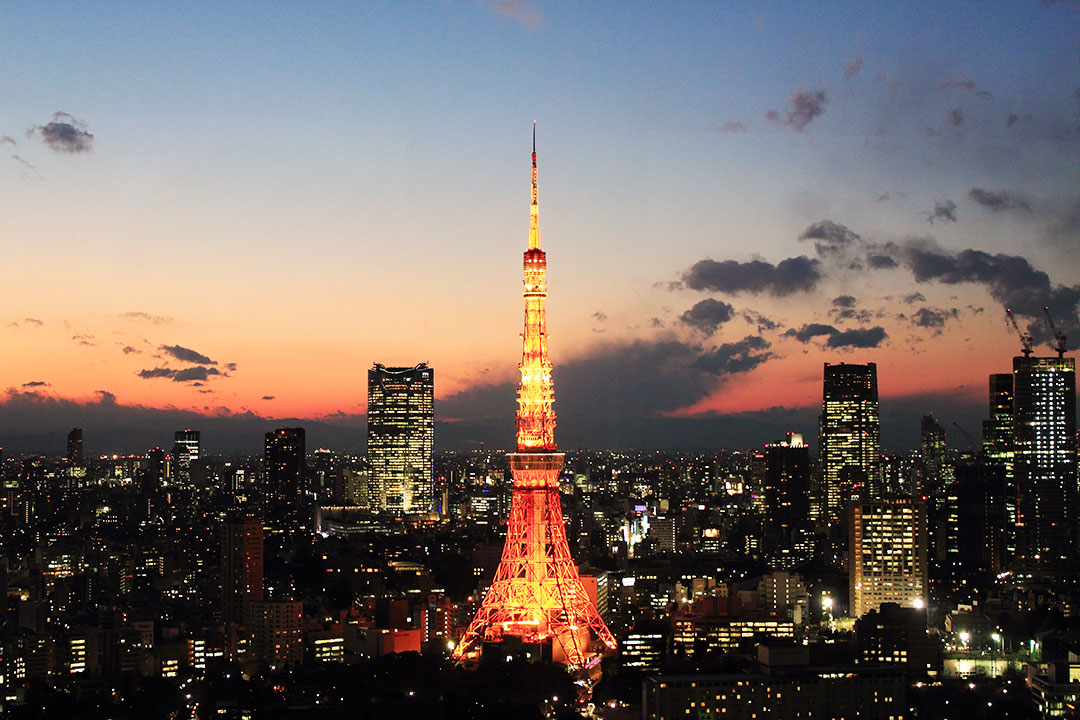
Obviously the Tokyo Tower is not just this. Inside there is a souvenir store, a very elegant bar and a stage where every week you can enjoy musical events. Even the younger ones can enjoy shows during holidays also thanks to "Noppon", the Tokyo Tower mascottes.
At its feet there's the Highball Garden Rooftop Genghis Khan: a terrace bar opened between March and September that serves specialties and exclusive cocktails.
From June 1st and August 31st there's a very peculiar and fascinating event called “Milky Way Illumination”. The stairs that go from the ground up to the observatory are enlightened with blu lights. On the roof a lot of starts will appear and it will make you feel as if you are in space. Furthermore, during the full moon nights, the Tokyo Tower lights up in a pink shade!
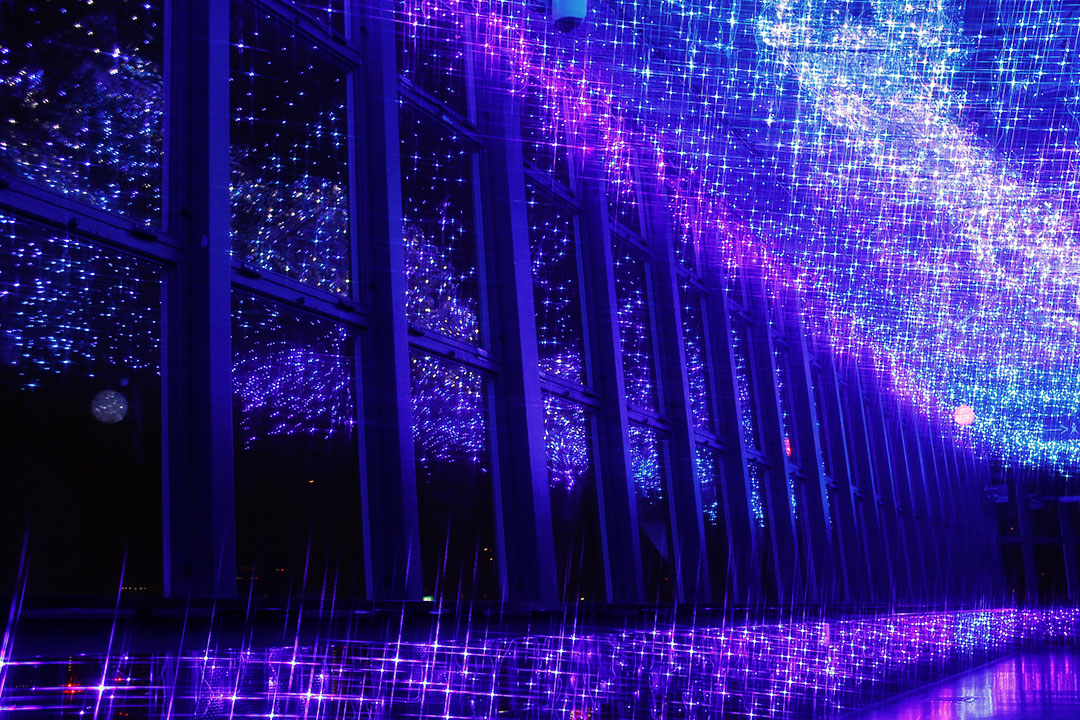
Even today, the Tokyo Tower serves the purpose it was built for. Thanks to the antenna on top, it takes care of the transmission of the signal for the main Japanese TV networks.
Tokyo Skytree

More recent than the Tokyo Tower is the Tokyo Sky Tree. Symbol of Tokyo architecture with it's shapes that reminds us of the ancient temples of the Heian era, it fills the sky with its 634 meters of height. A number that is not casual: the signs mu (6), sa (3), shi (4) they form the word "Musashi", ancient name of the region where the Tokyo Sky Tree is.
This is the highest telecommunication in the world, with one of the most beautiful sceneries thanks to the Solakara Point. Here the floor and the glass walls gift the feeling of belonging to the sky.
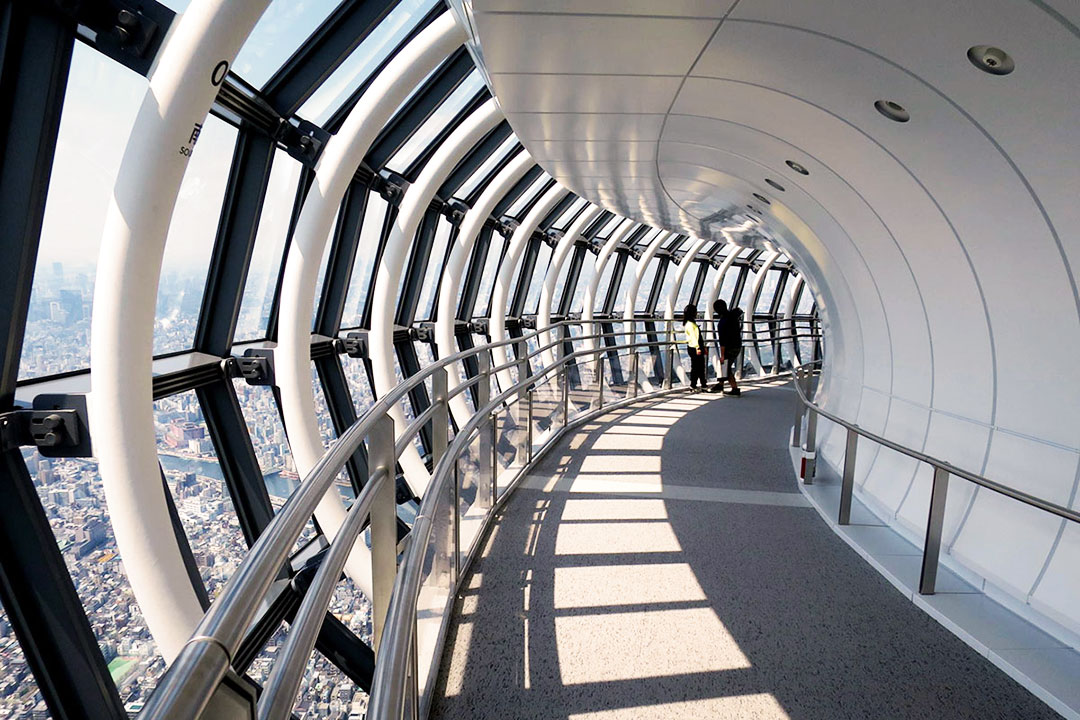
The Tokyo Sky Tree mixes modern and ancient times. From the fourth floor of the tower you can see the SUPER CRAFT TREE where the designer Yukio Hashimoto showcased his creations. The artist mixes the modern techniques with the Edo period craftsmanship. A proof of this is the TEMBO SHUTTLE, the lift with crafted panels that represent the miyakadori (the bird symbol of Tokyo), Sakura trees and the Sumidagawa river.

As custom in Tokyo, also the Sky Tree has its own mascotte, the Sorakara-chan (daughter of the Sky). Naturally, the main function of the tower is the distribution of the radio and tv signal at a regional leve.
Photo Credit: gaijinpot.com; tokyo-skytree.jp; tokyotower.co.jp; google image;
Japan History: Zojoji Temple
Zojoji Temple
The Zojoji temple was founded in 1393. Relocated to the present site in 1598 after Ieyasu Tokugawa, founder of the Tokugawa shogunate, entered present-day Tokyo in 1590. After the start of the Edo Period, Zojoji became the family temple of the Tokugawa family, one of the most powerful houses in all Japan. The cathedral, temples and the mausoleum burned down during the air raids during World War II. However, most of the structures got rebuilt. Today Zojoji continues to serve as the main temple of the city. Due to its position of favour, this is not just one of the main religious spot but also one of the main landmarks for tourists. The view of the Tokyo Tower on its background is just breathtaking.
Zojoji's Peculiarities
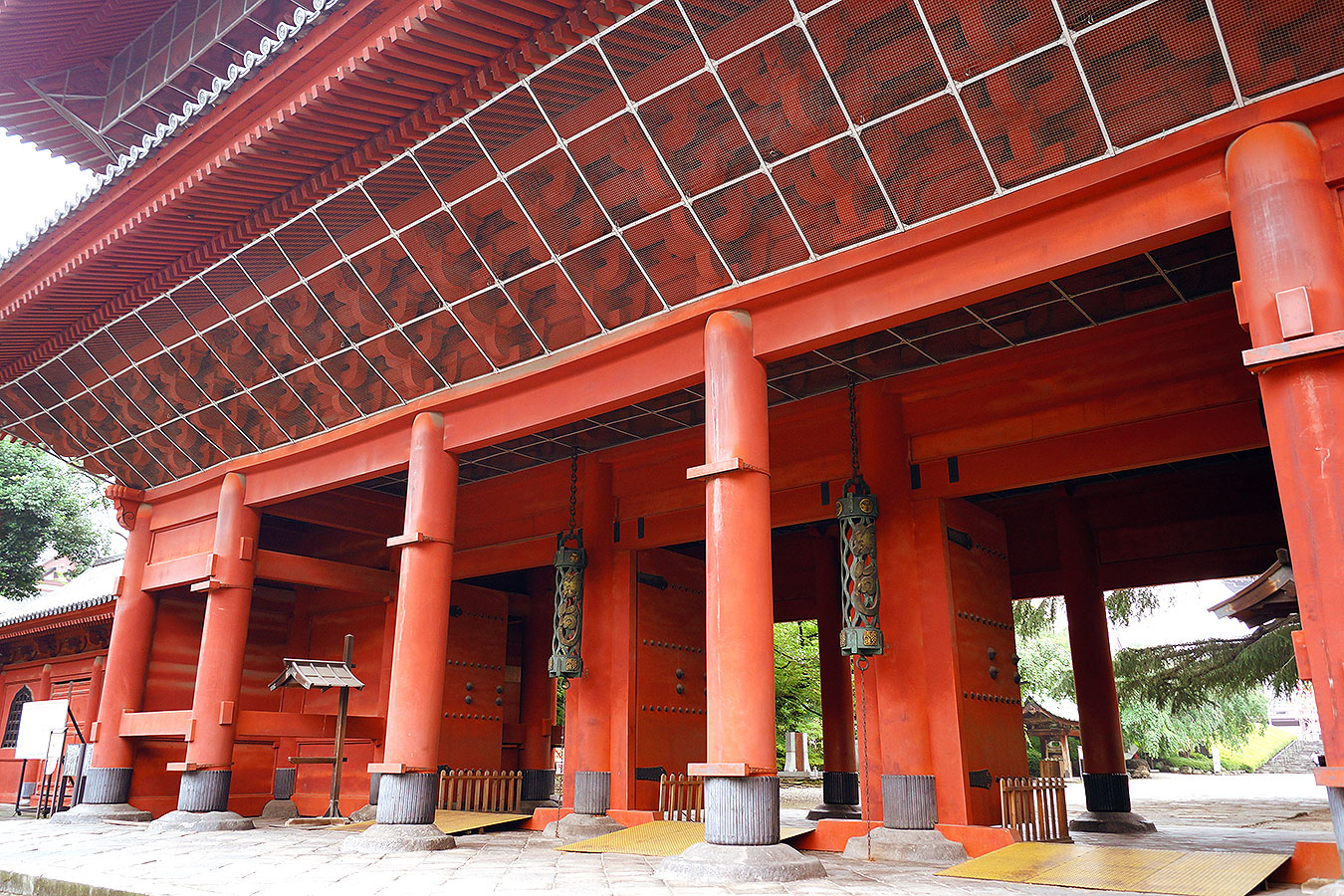
THE GATE
The main wooden gate is peculiar for its vermilion color. Measuring 21 meters in height, 28.7 meters in width and 17.6 meters in depth, it was built in 1622. Today the gate is one of the most important remains of the Edo Period architecture. Its name is Sangedatsumon and it means a gate (mon) for getting delivered (gedatsu) from three (san) earthly states of mind: greed, anger and stupidity.
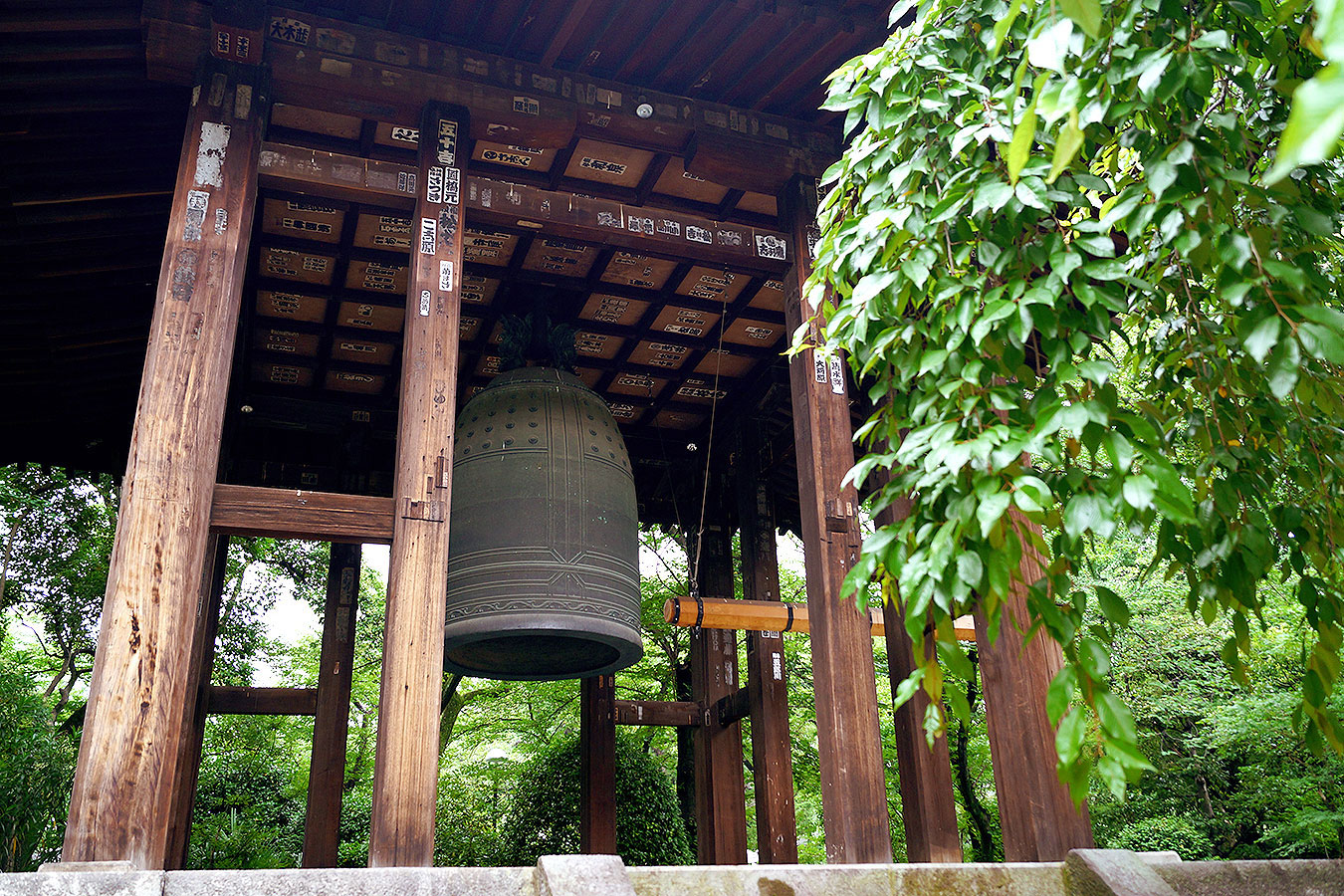
THE BELL
With a diameter of 1.76 meters, a height of 3.33 meters and a weight of 15 tons, this bell is one of the Big Three Bells of the Edo Period. Tolled twice a day for 6 times each, in the early morning and in the evening. Its name is the Daibonsho (Big Bell). It serves to purify 108 earthly passions (bonno), which lead people astray. Furthermore, legend says ti gives profound equanimity through an exhortation, repeated six times a day.
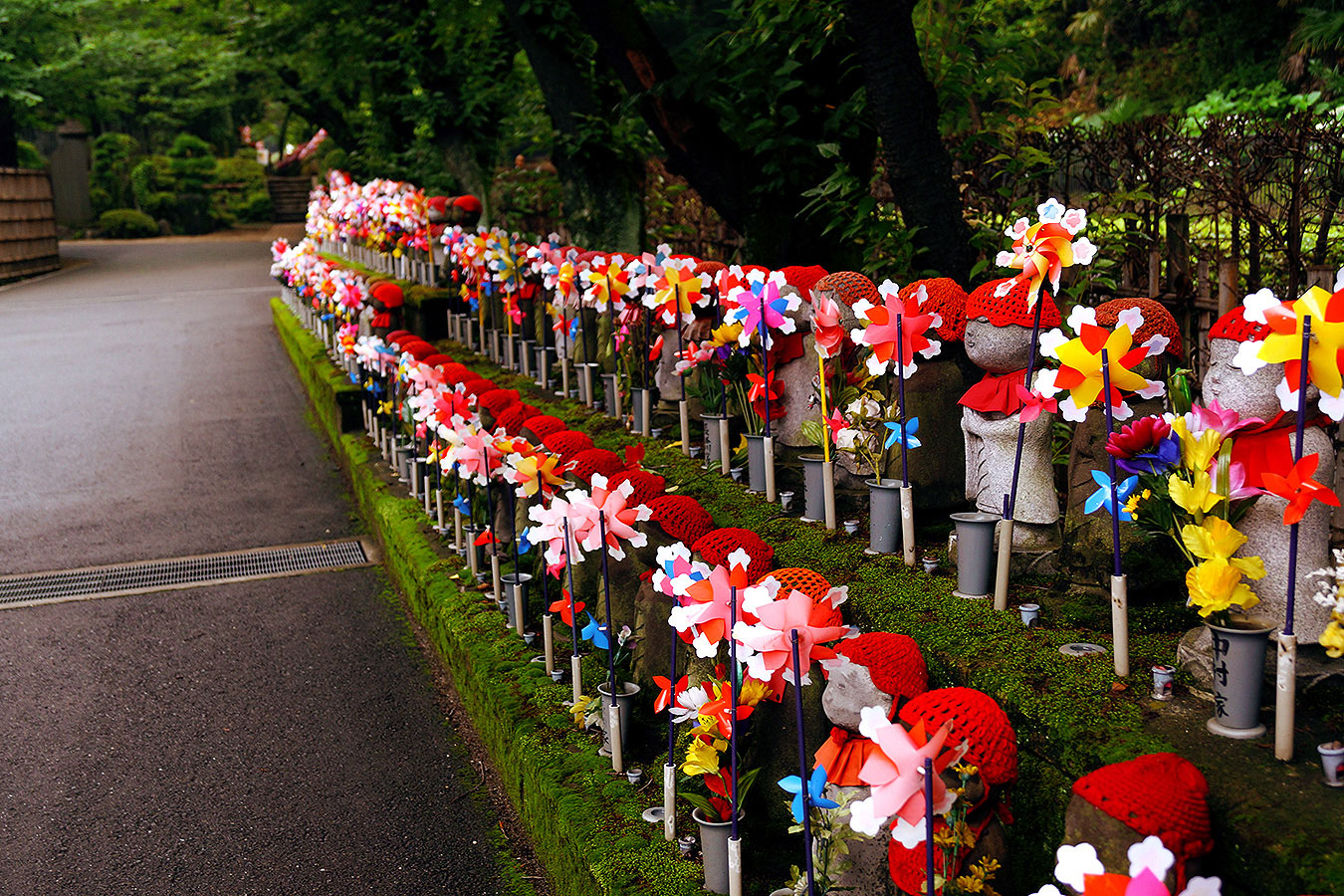
THE STATUES
When you walk around in the Zojoji Temple, one of the first thing you might notice are these statues representing babies. They are the Ojizo-san, or Ojizo-sama. These little statues are characterized by bright red clothing and handmade crochet caps. They might just seem cute ornaments, but tradition says they protect the spirit of unborn children and little ones that passed away.
Photo Credit: Japan Italy Bridge
Zojoji Official website: Click here
Japan Travel: Asakusa & Sensoji Temple
Asakusa
Asakusa is one of the most famous district of Tokyo. Situated in the north-east side of the city and delimited by the Sumida river. Asakusa is a very interesting place mostly thanks to the Sensōji temple dedicated to Kannon Sama, Buddhist goddess of mercy.
Passing the Kaminarimon, the door of “thunder” with its big red paper lantern called Chōchin, there’s the famous Nakamise Dori. This is a peculiar street is full of stands where you can find many items and traditional clothes together with toys for children. For all the food lovers, here you can taste the traditional meals like Senbei (rice crackers in soy sauce), the amazing Yakisoba (buckwheat noodles) and Yakitori (grilled chicken skewers).
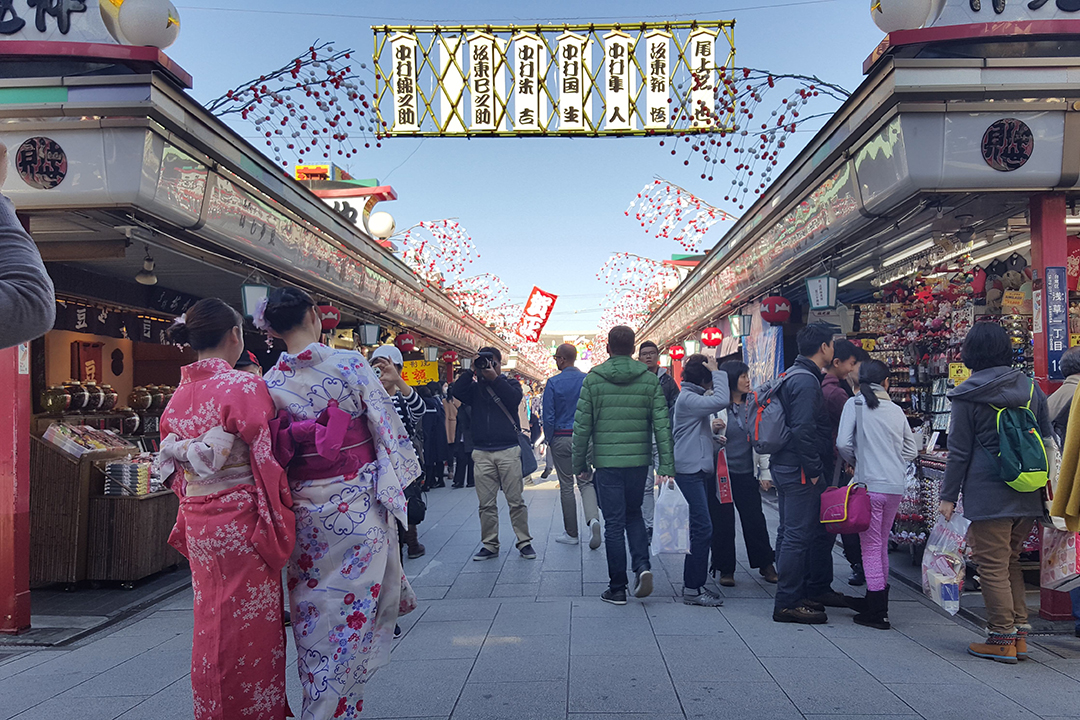
If you are looking for a place where to rest, buy souvenirs and feel completely submerged in Japanese history and tradition, come to Asakusa. Here you can find a little bit of everything. The ambience is even more peculiar thanks to the porters in traditional clothes and the rickshaws.
Asakusa is also a wonderful place for kids. Around here you can find the oldest playground in Japan, Hanayashiki.
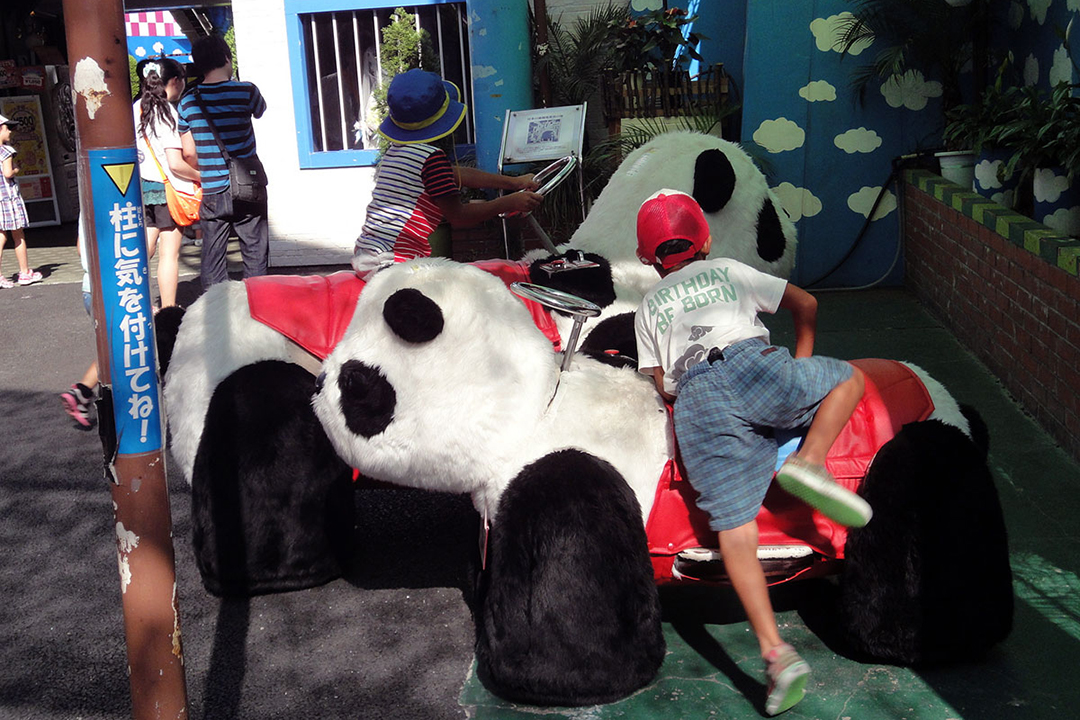
Opened since 1853 and completely abandoned afterwards after the Second World War. Due to this, in 1949, following a couple of years of restoration and update for safety measures, the playground re-opened. Something very cute to see is the mascotte of the playground, the Panda Car and the kids can have fun driving it.
Sensō-ji Temple
The Sensō-ji is a temple dedicated to the boshisattva Kannon (Avalokitesvara). Legend says that the golden statue of Kannon found in the Sumida river by two fishermen, Hinokuma Hamanari and Hinokuma Takenari in 628. The statue was then preserved from the head of the village Hajino Nakamoto in his house in Asakusa.

The house became a temple but the actual shrine was built in 645. Restored after the destruction of World War II, the temple is now a symbol of rebirth and peace for all Japanese. Furthermore, a tree was born inside the trunk of a previous one destroyed by the bombing and became another symbol of rebirth.
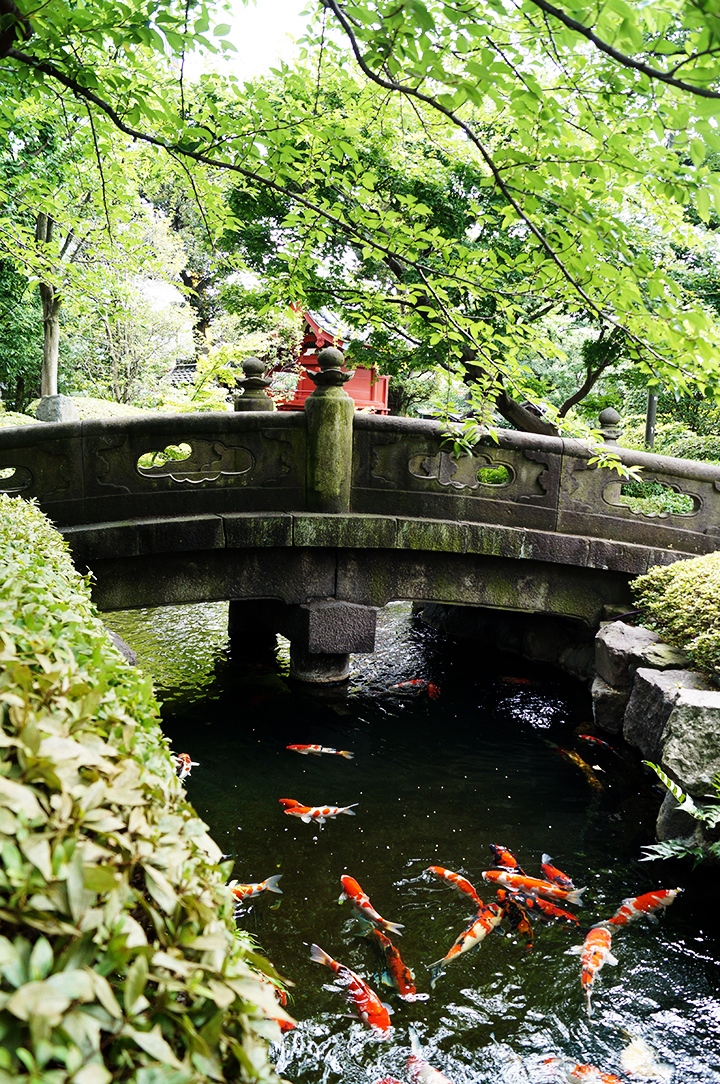
The Sanja Matsuri, the most important Japanese festival, takes place at Sensō-ji in spring. It lasts 3/4 days and it attracts a lot of people between tourists and in loco. This festival has been transformed quite a few times. Originally it started as “funamatsuri”, a ceremony taking place on a ship. However, after changing to the use of “dashi”, ceremonial carts, it took its modern form with three “mikoshi”, altars, shown in a procession.
In the temple you can find omikuji dispensers, tickets containing a divine prophecy. Also it's famous for its zen garden in typical Japanese style.
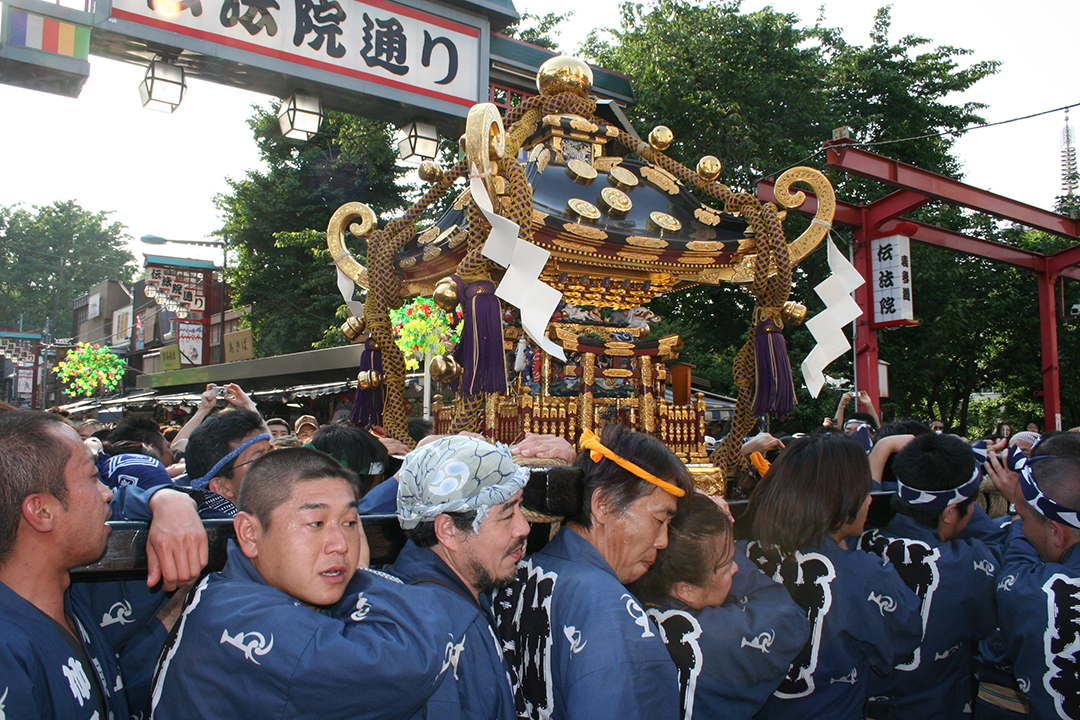
Asakusa in pills:
Where: North-east Tokyo
Peculiarities: Sensō-ji Temple, Kaminarimon, Hanayashiki playground, Nakamise Dori
Food: Senbei, Yakisoba, Yakitori and other specialties of the Japanese cuisine
Photo Credits: Google Images & Japan Italy Bridge







